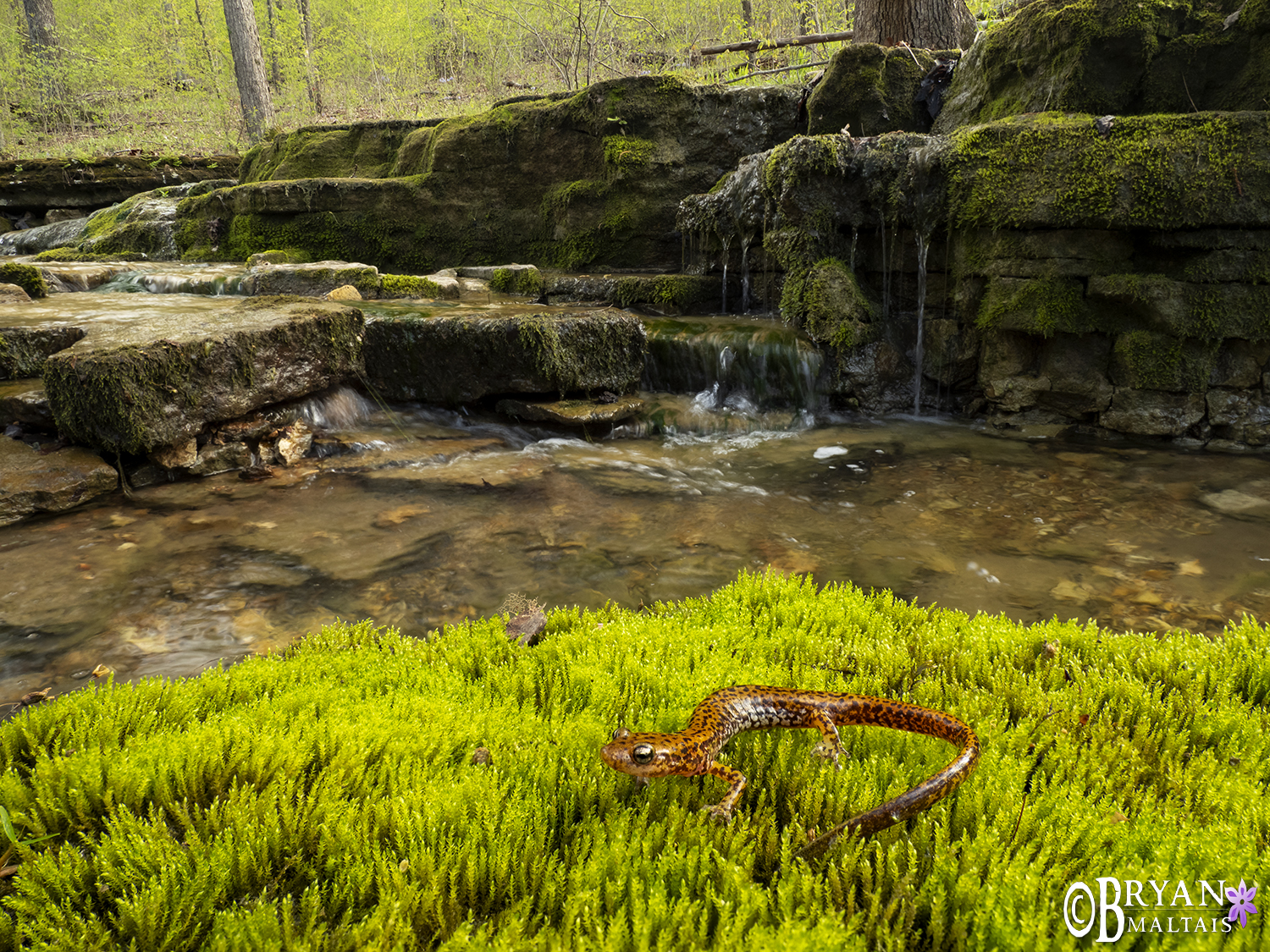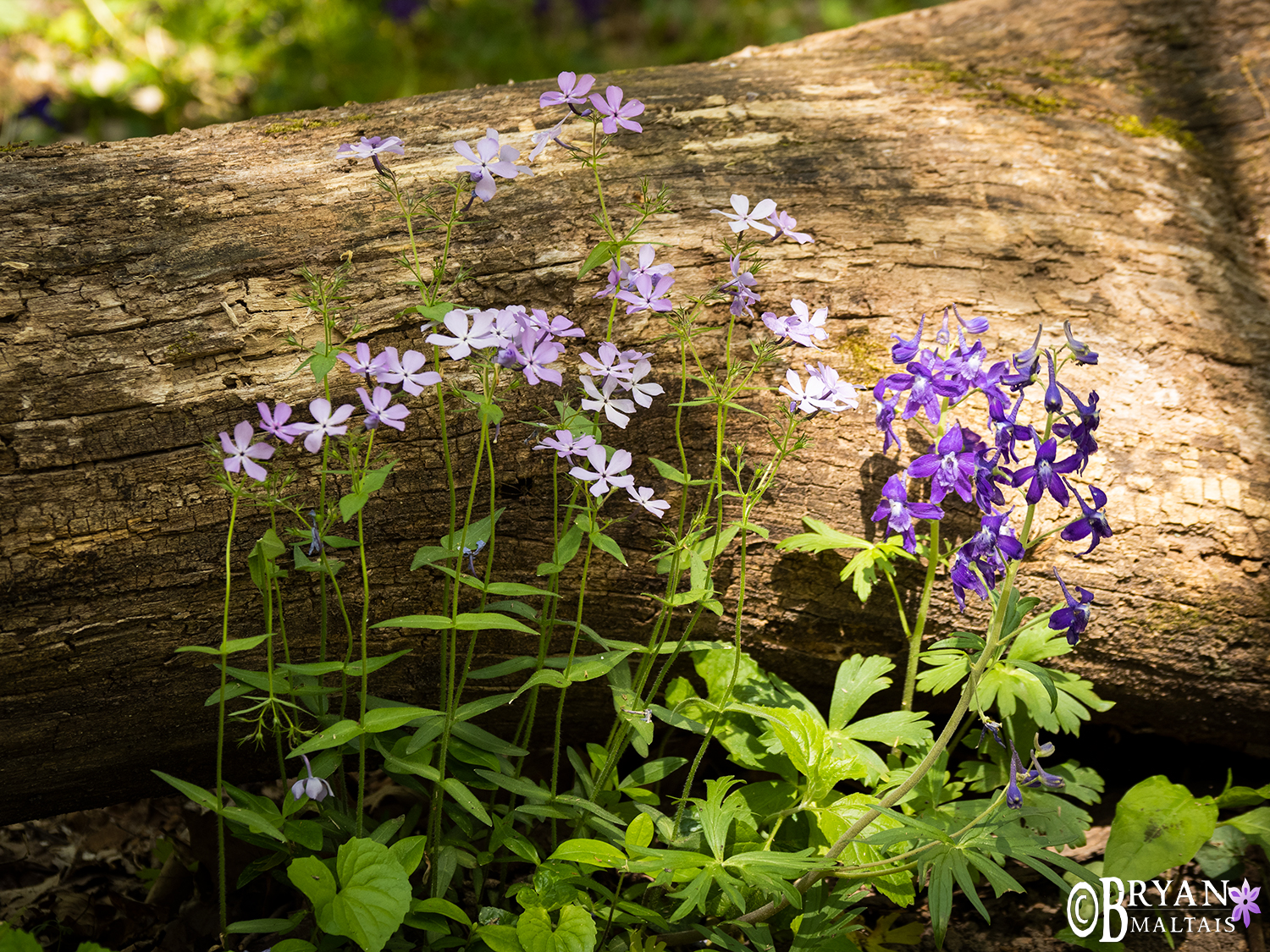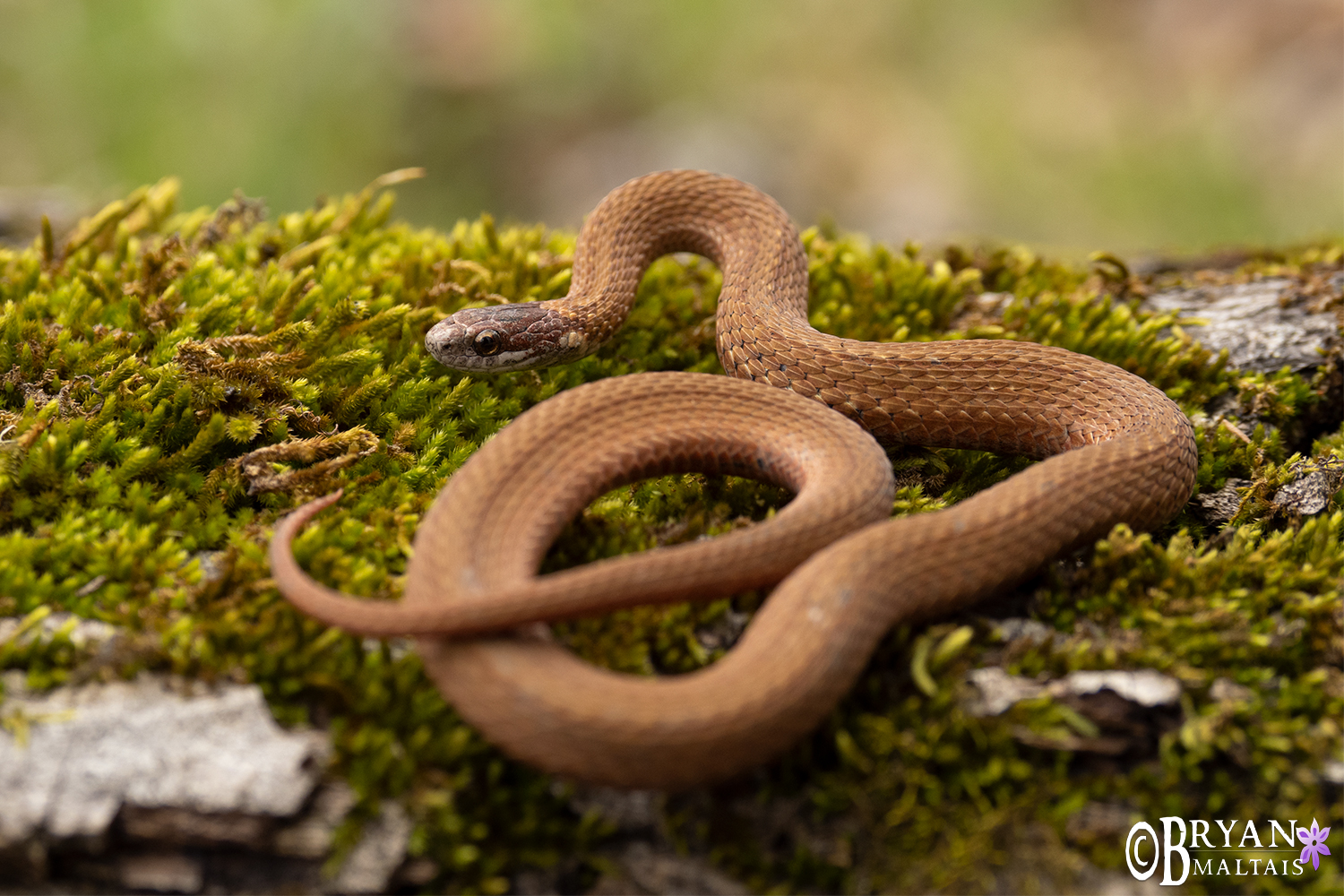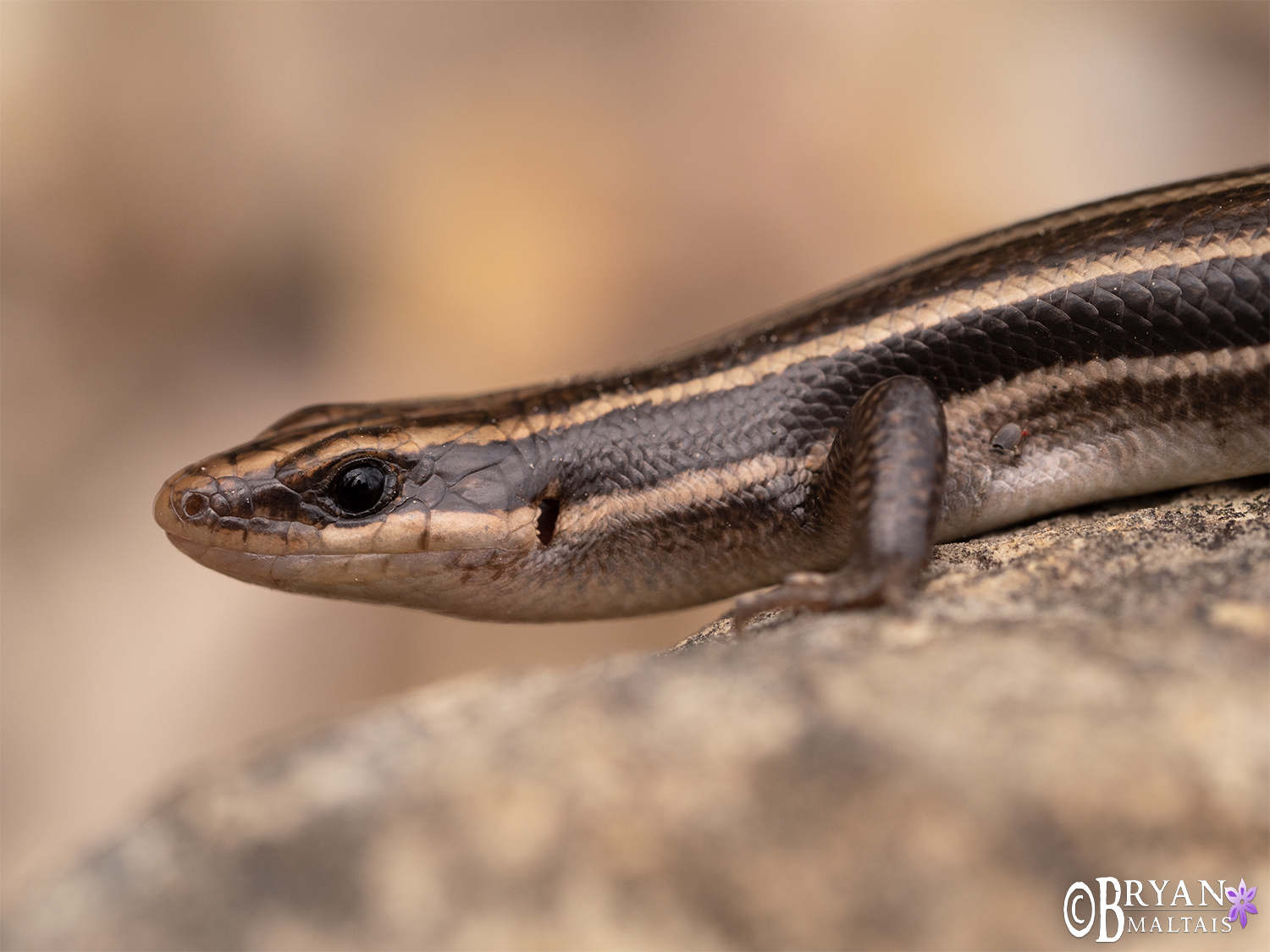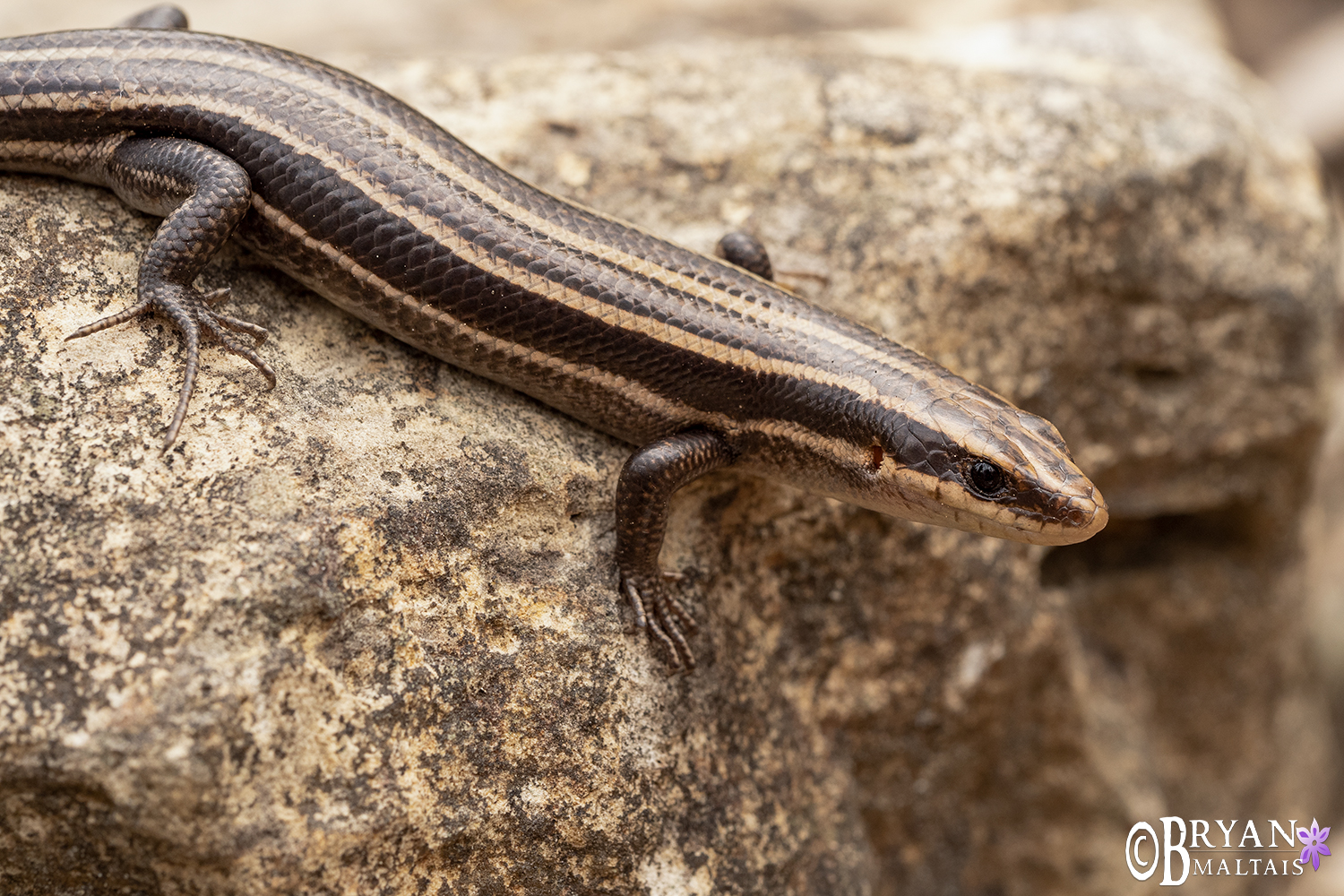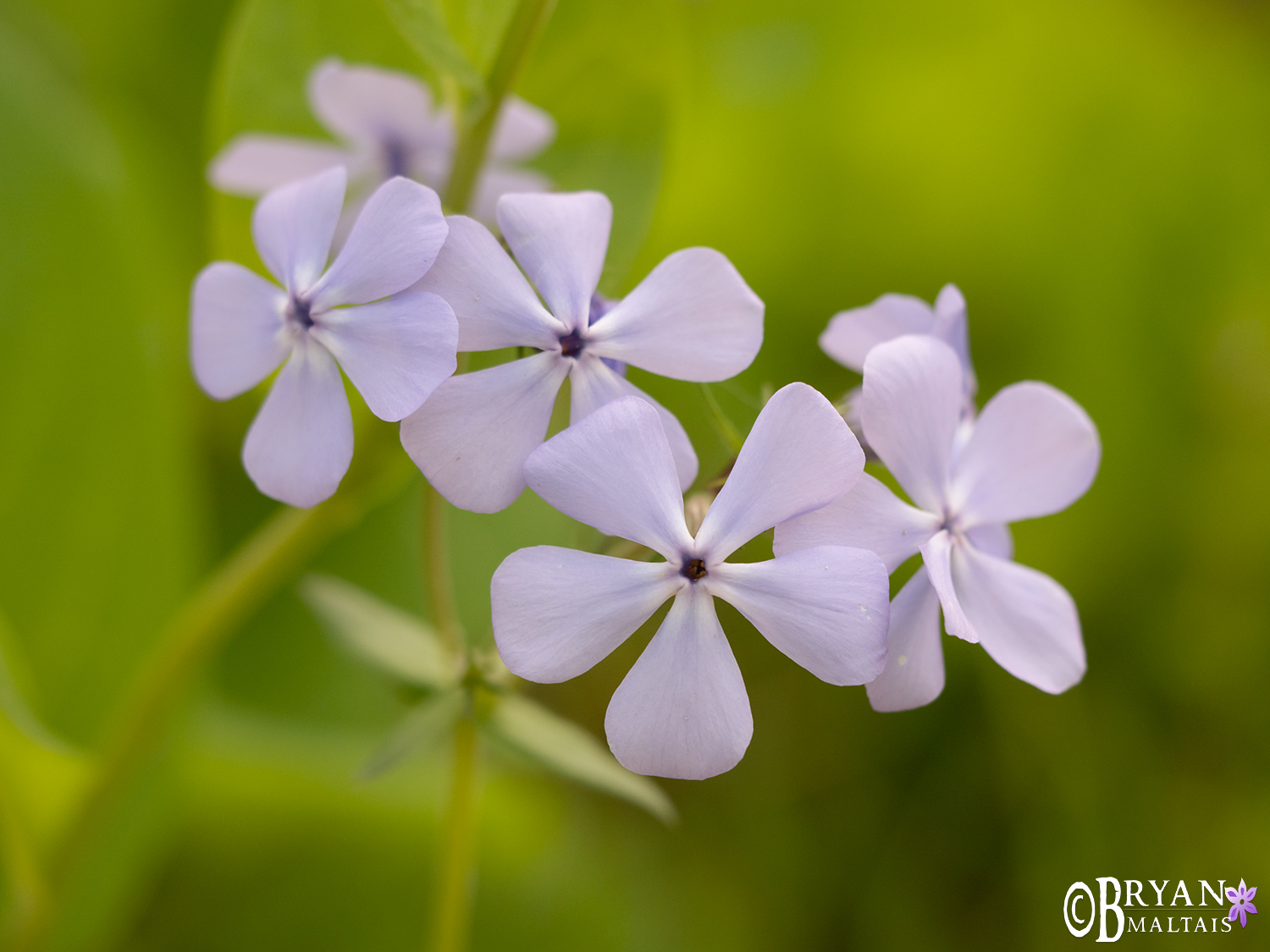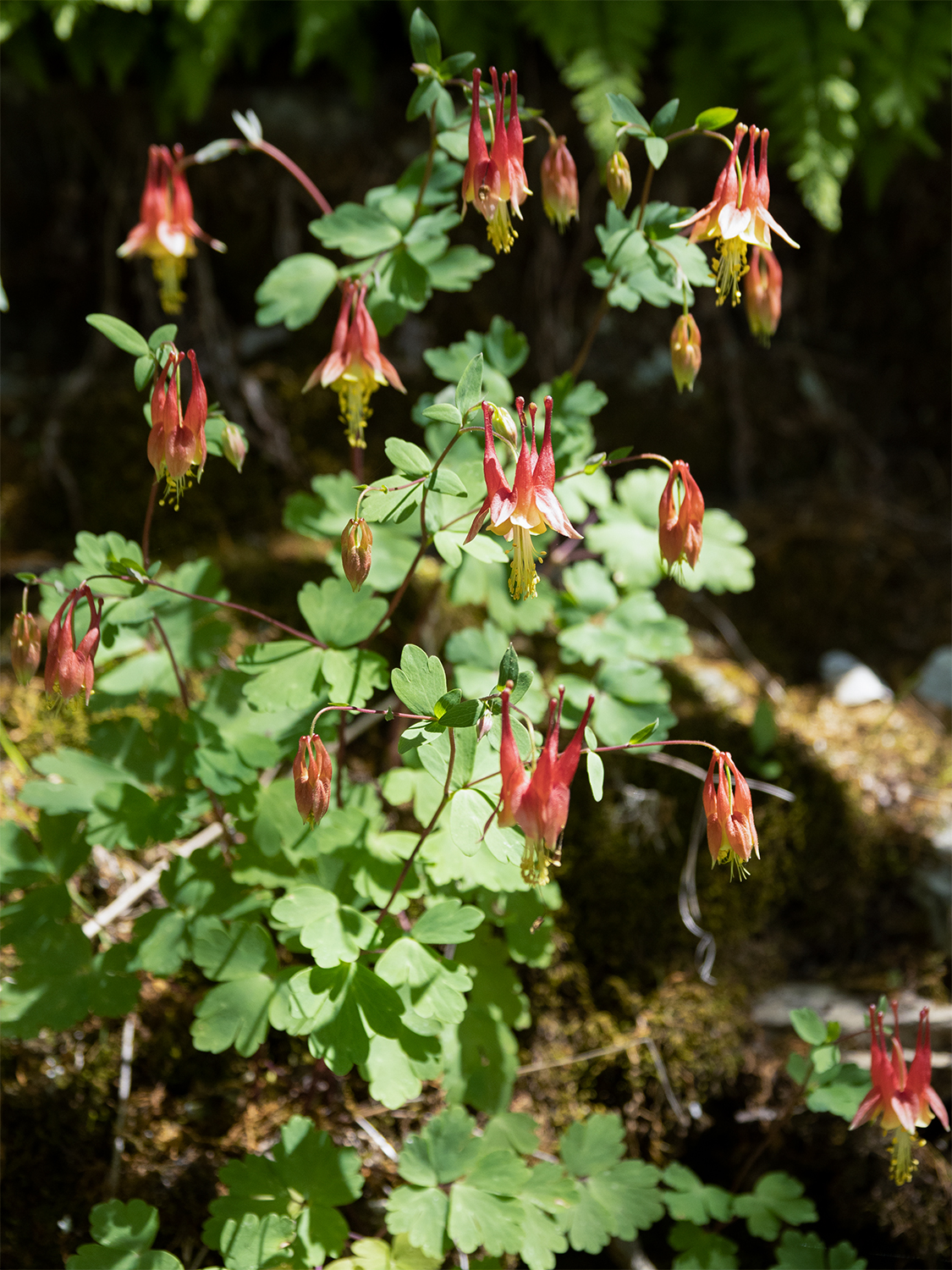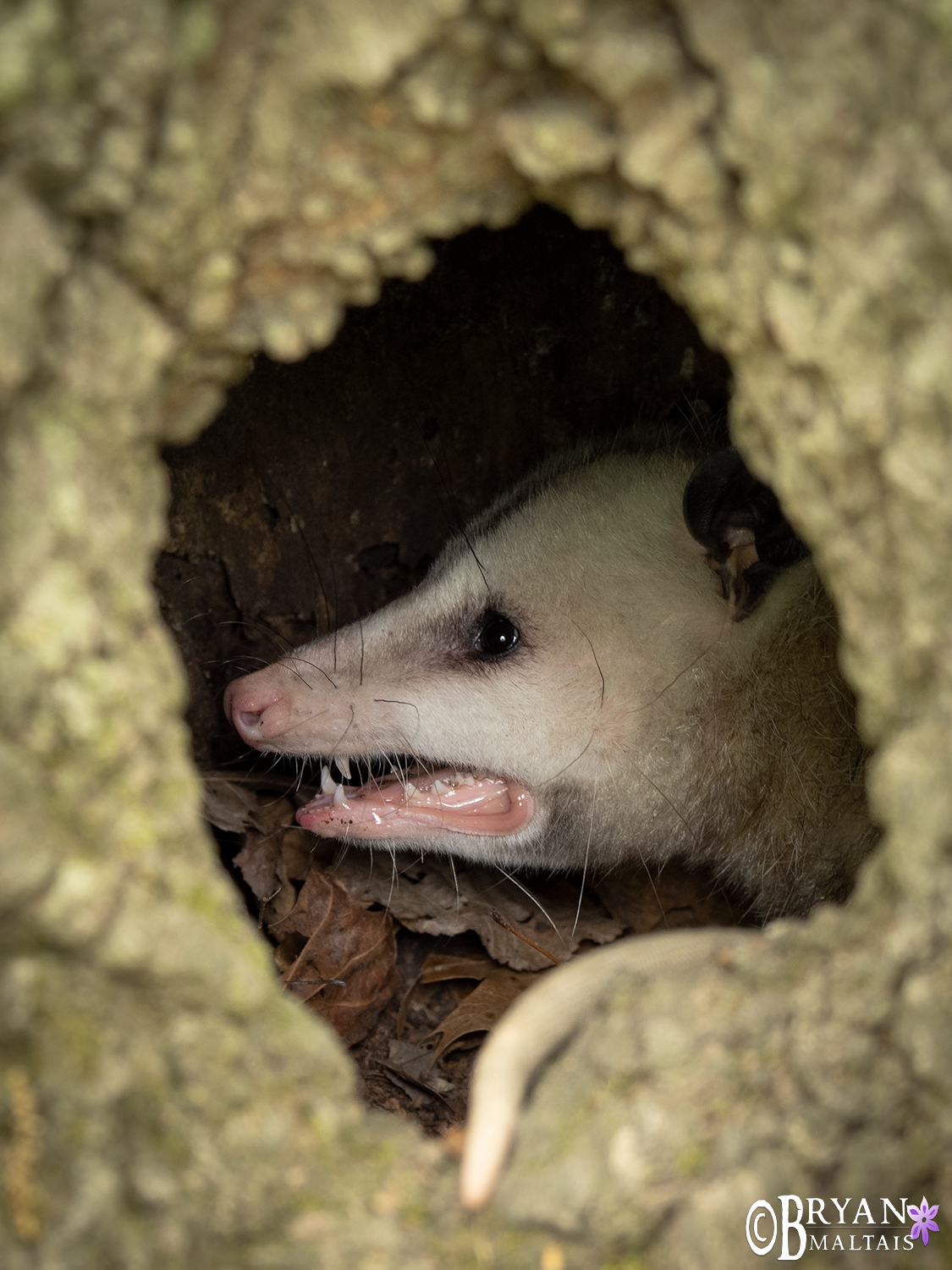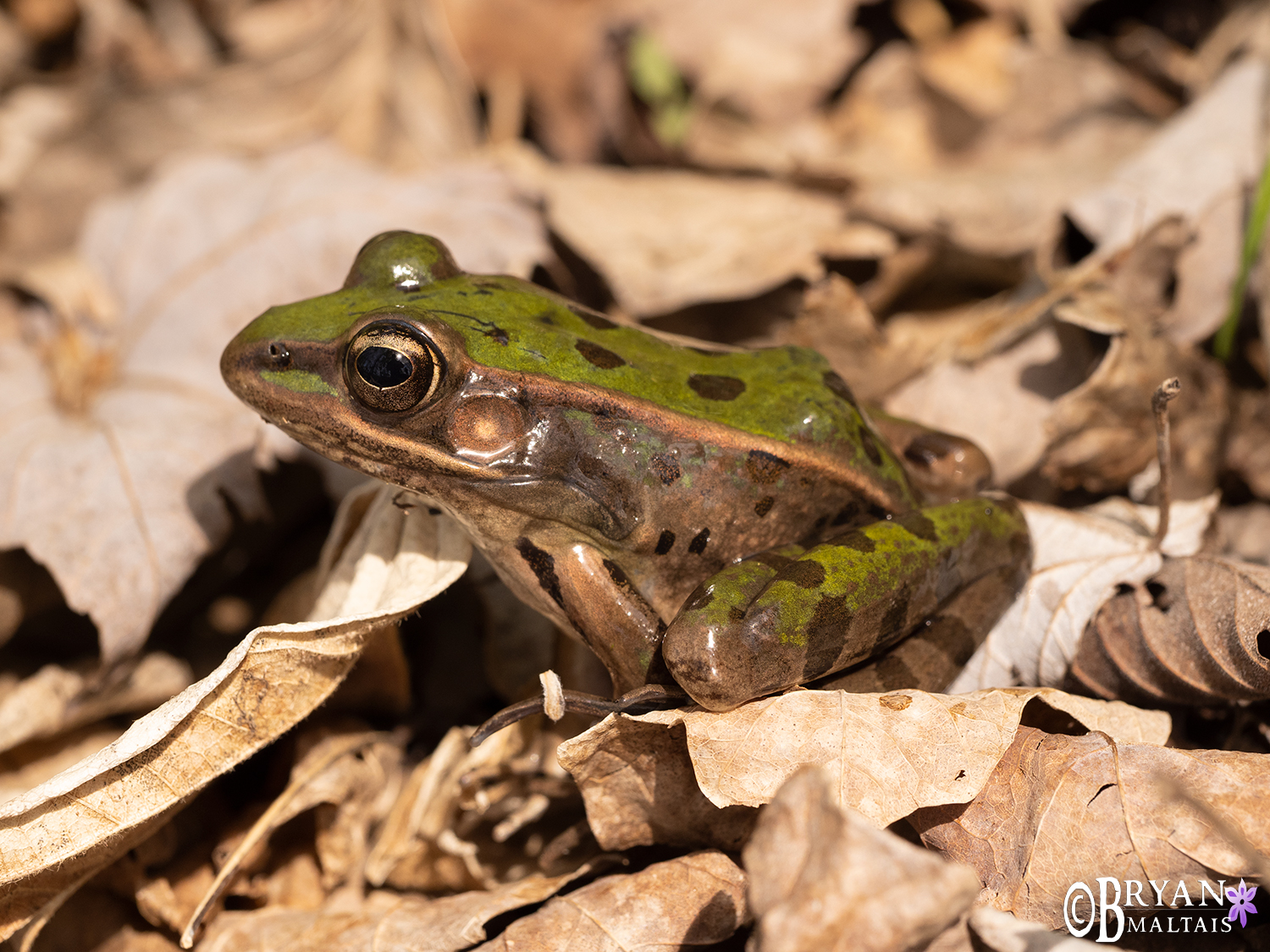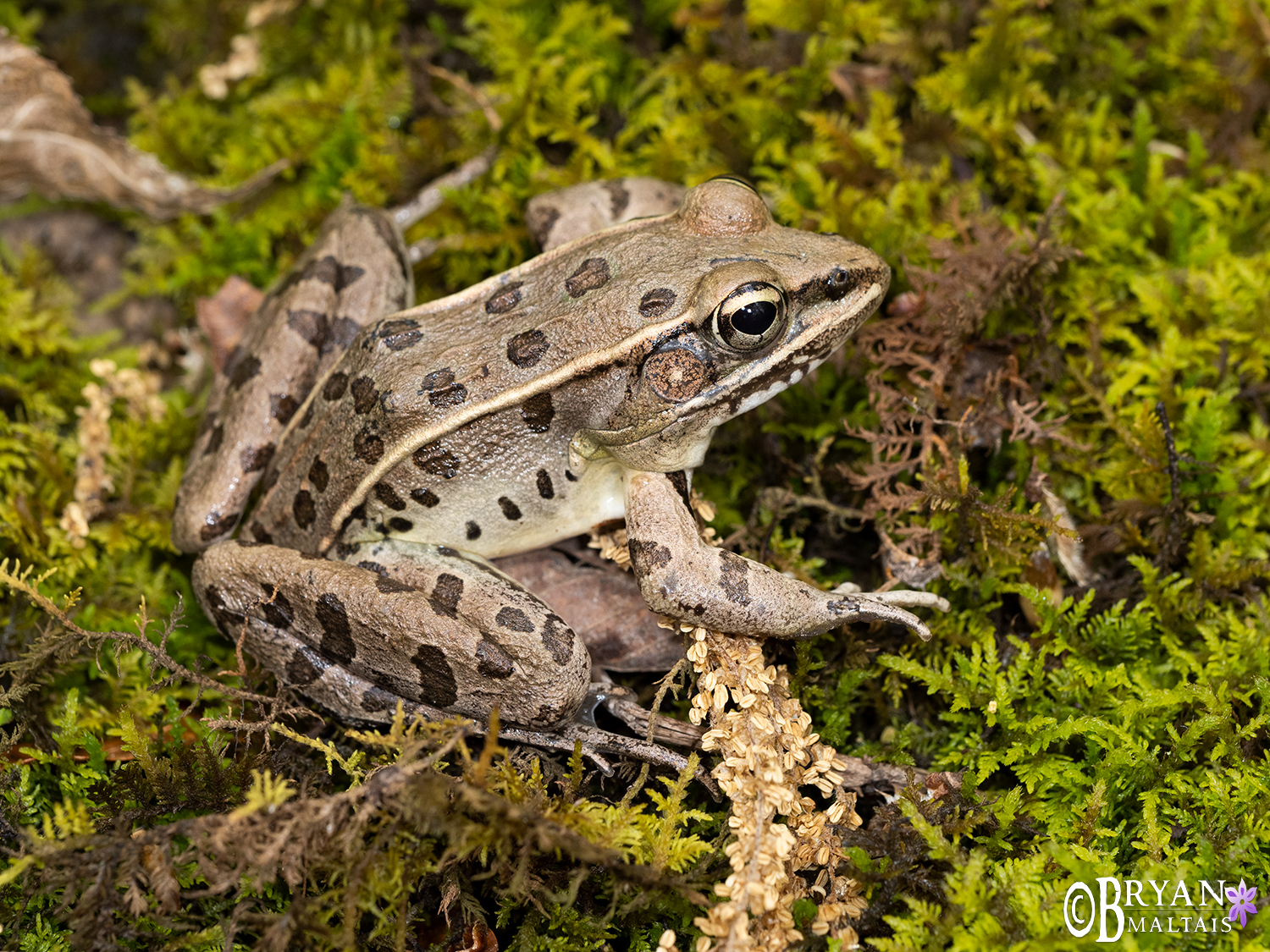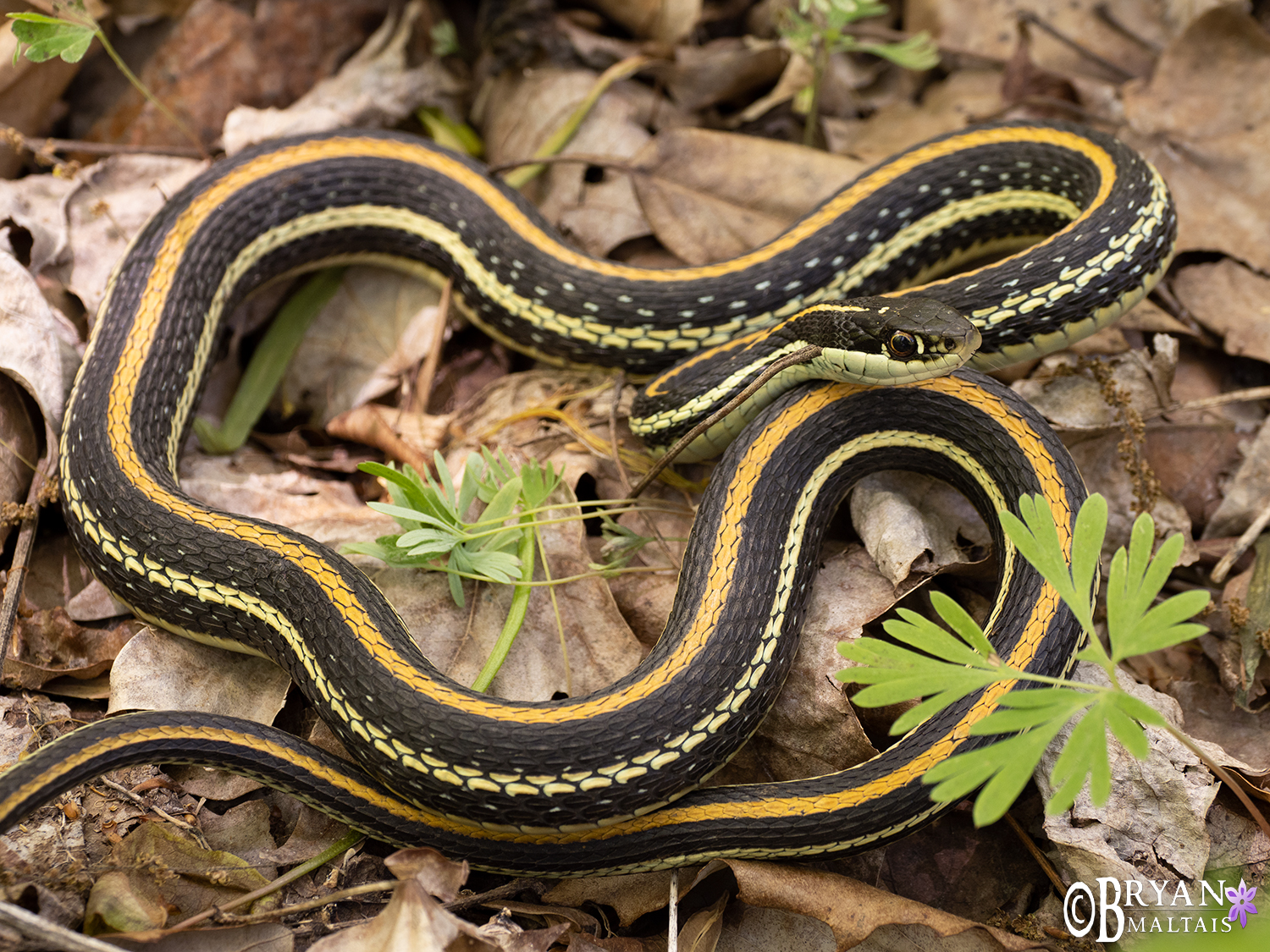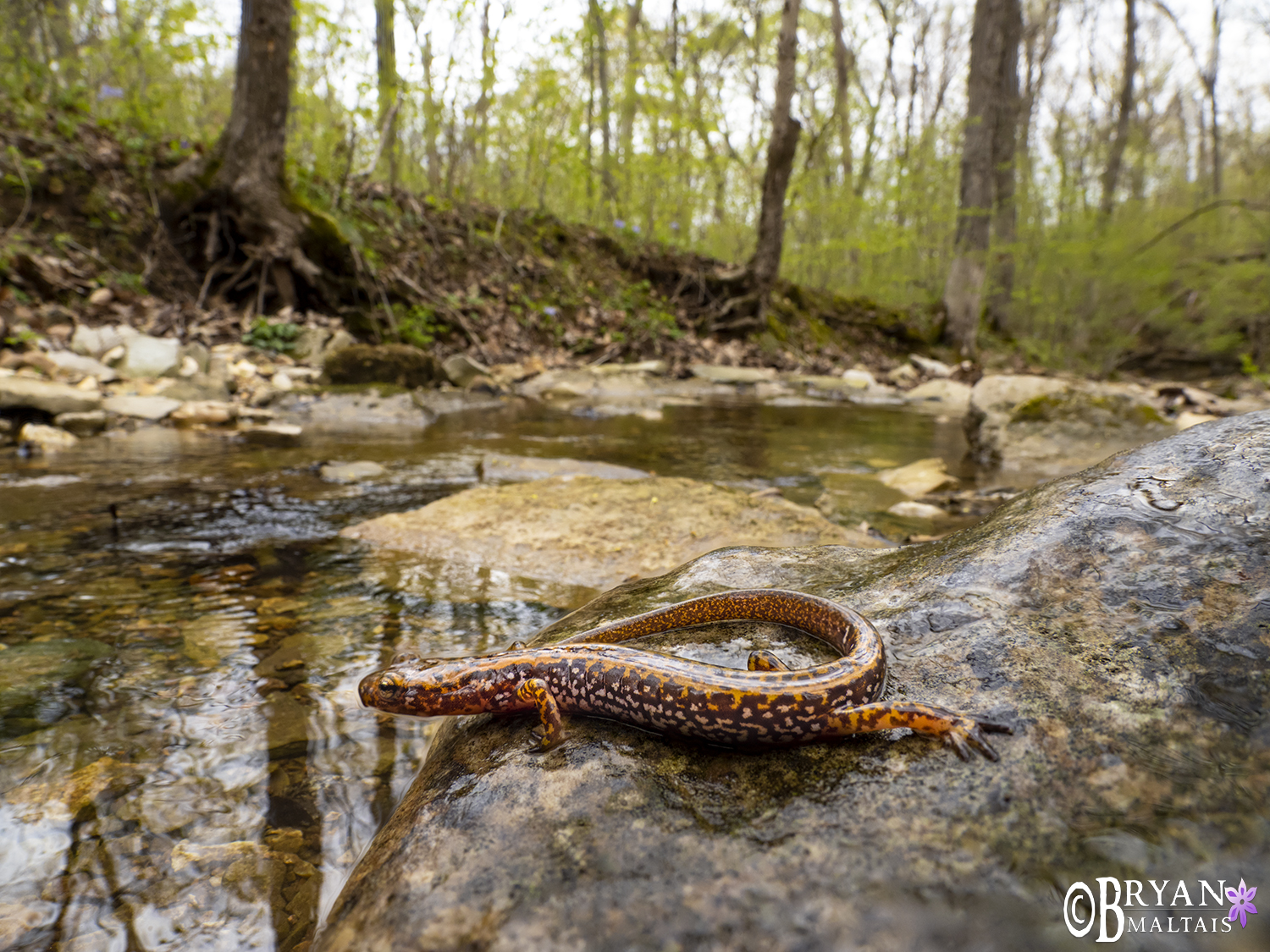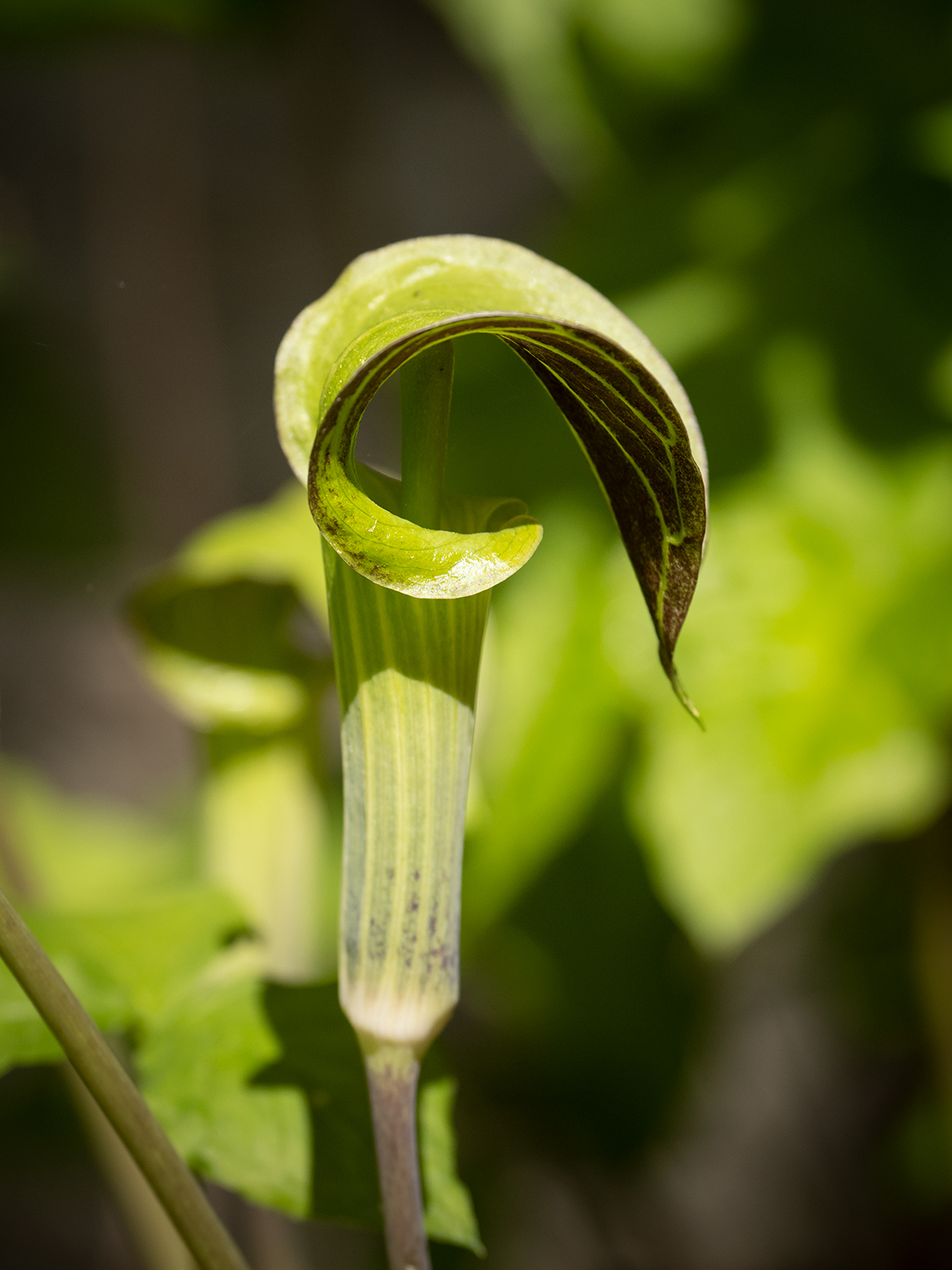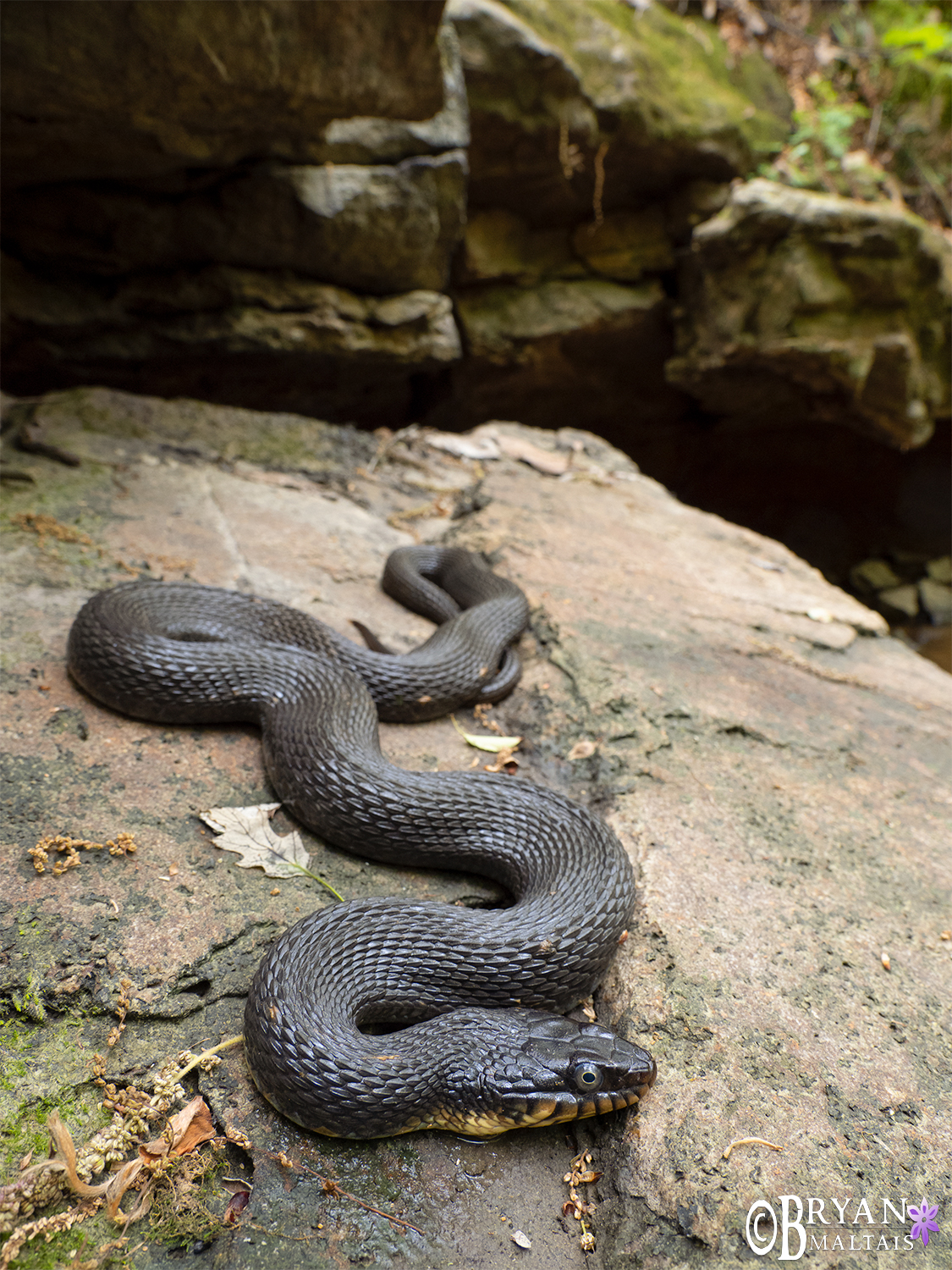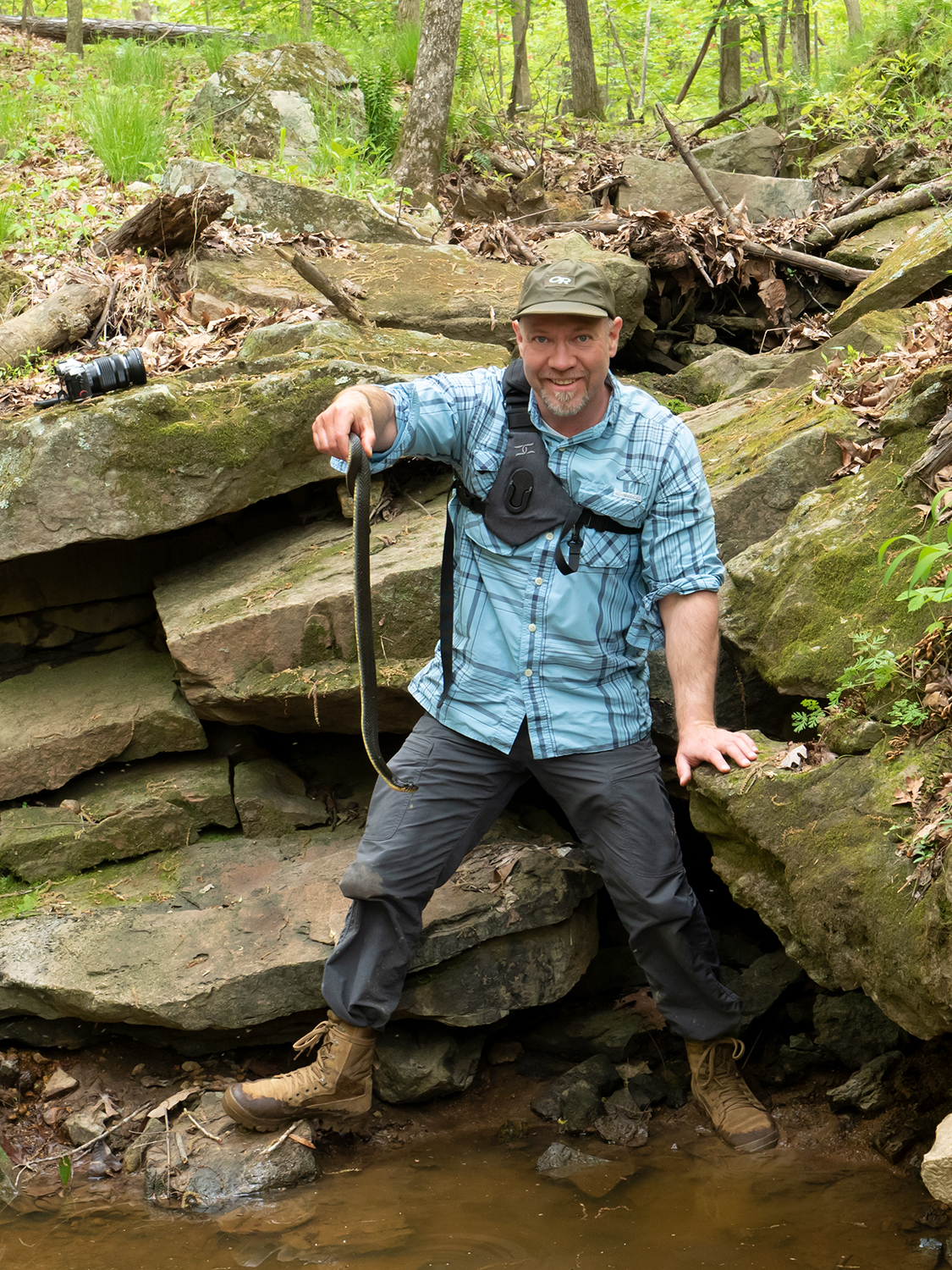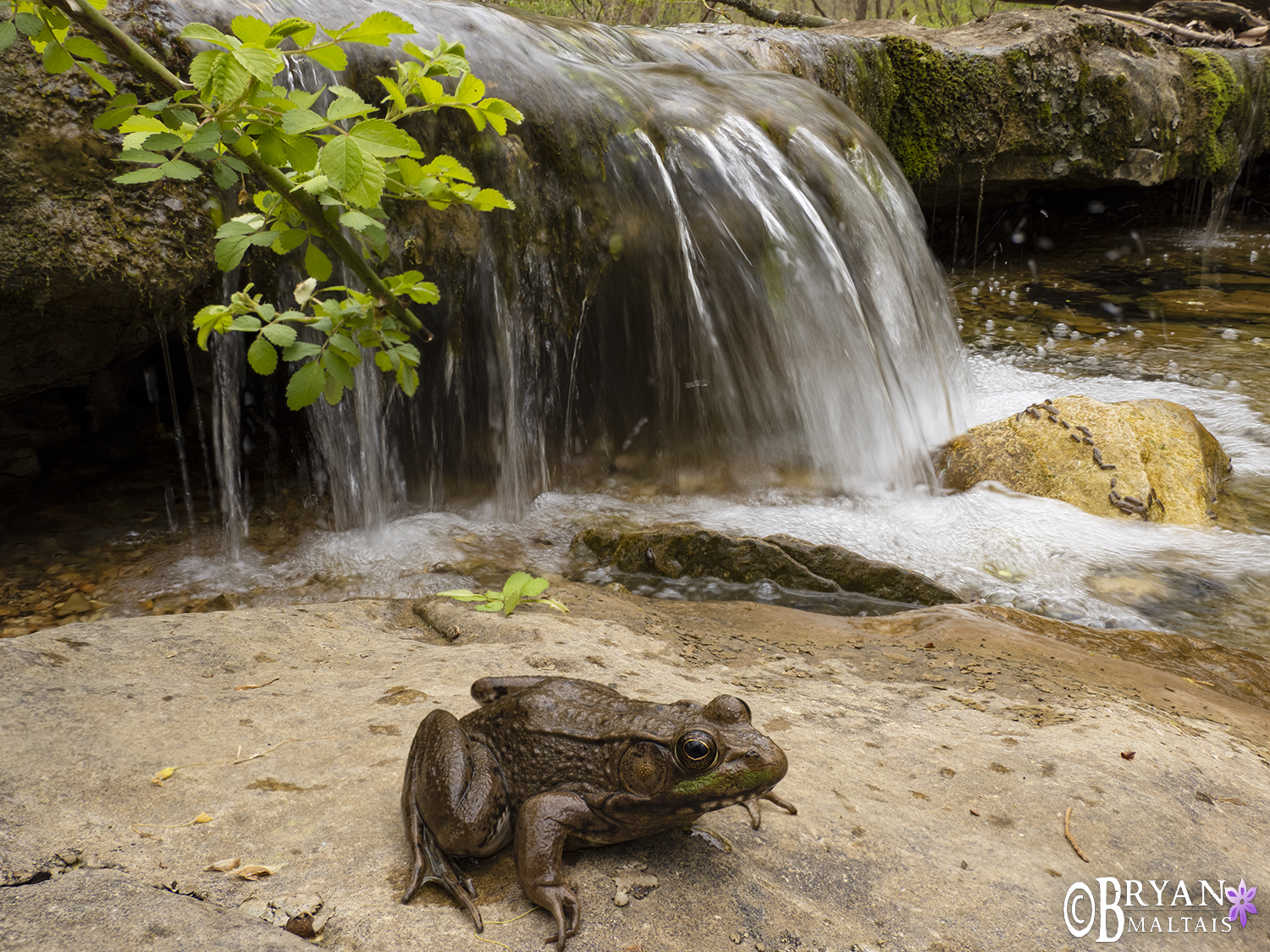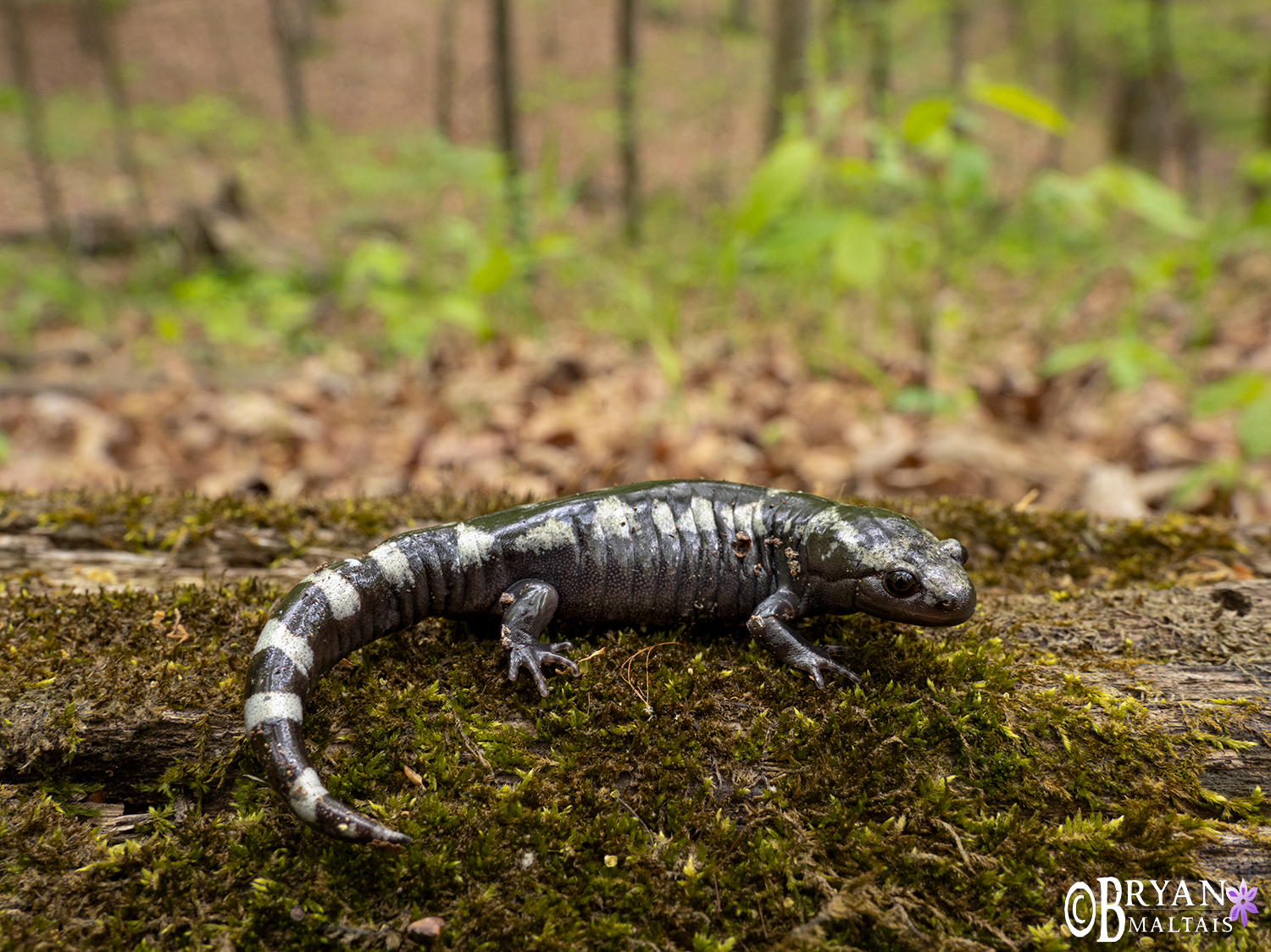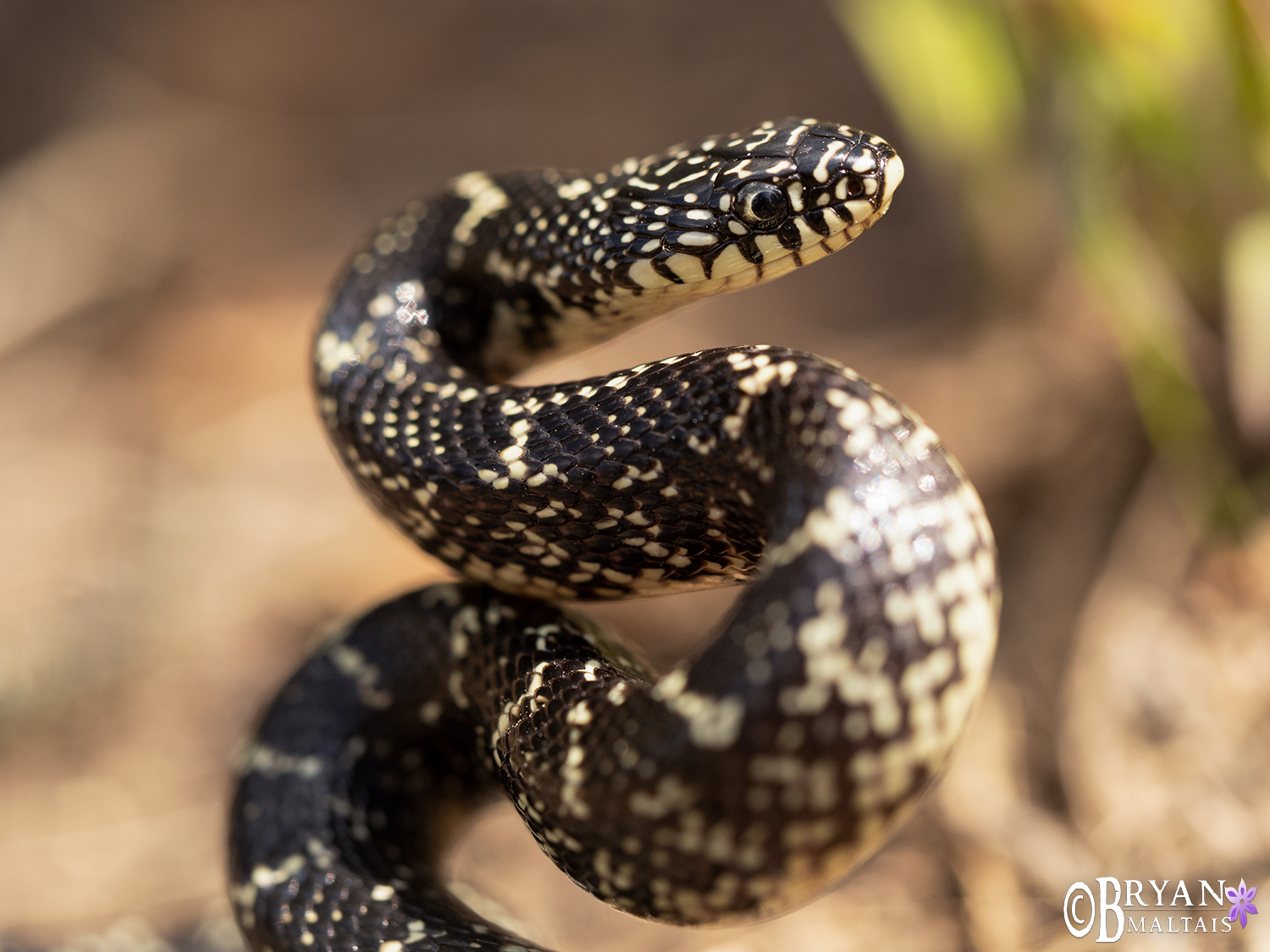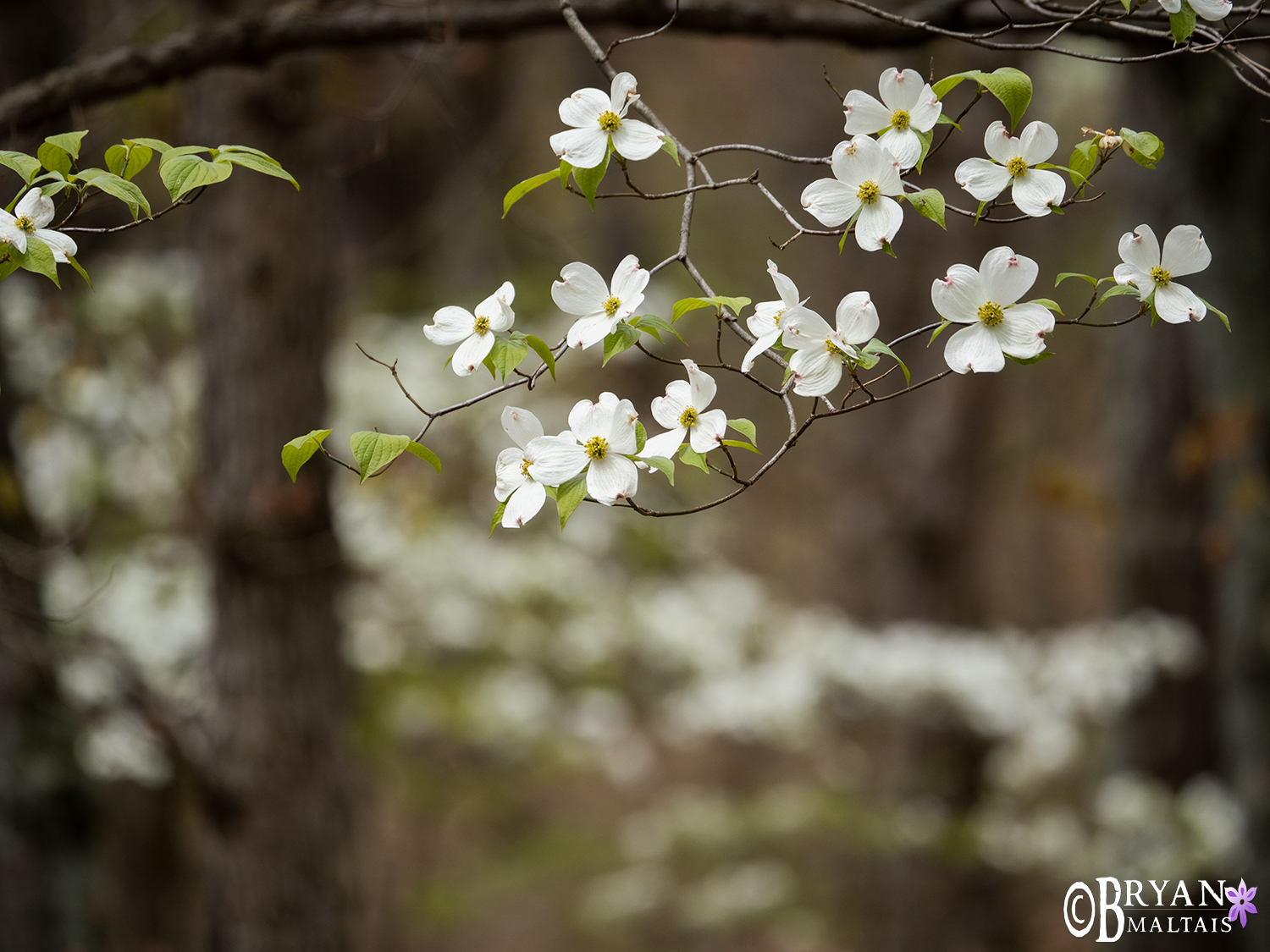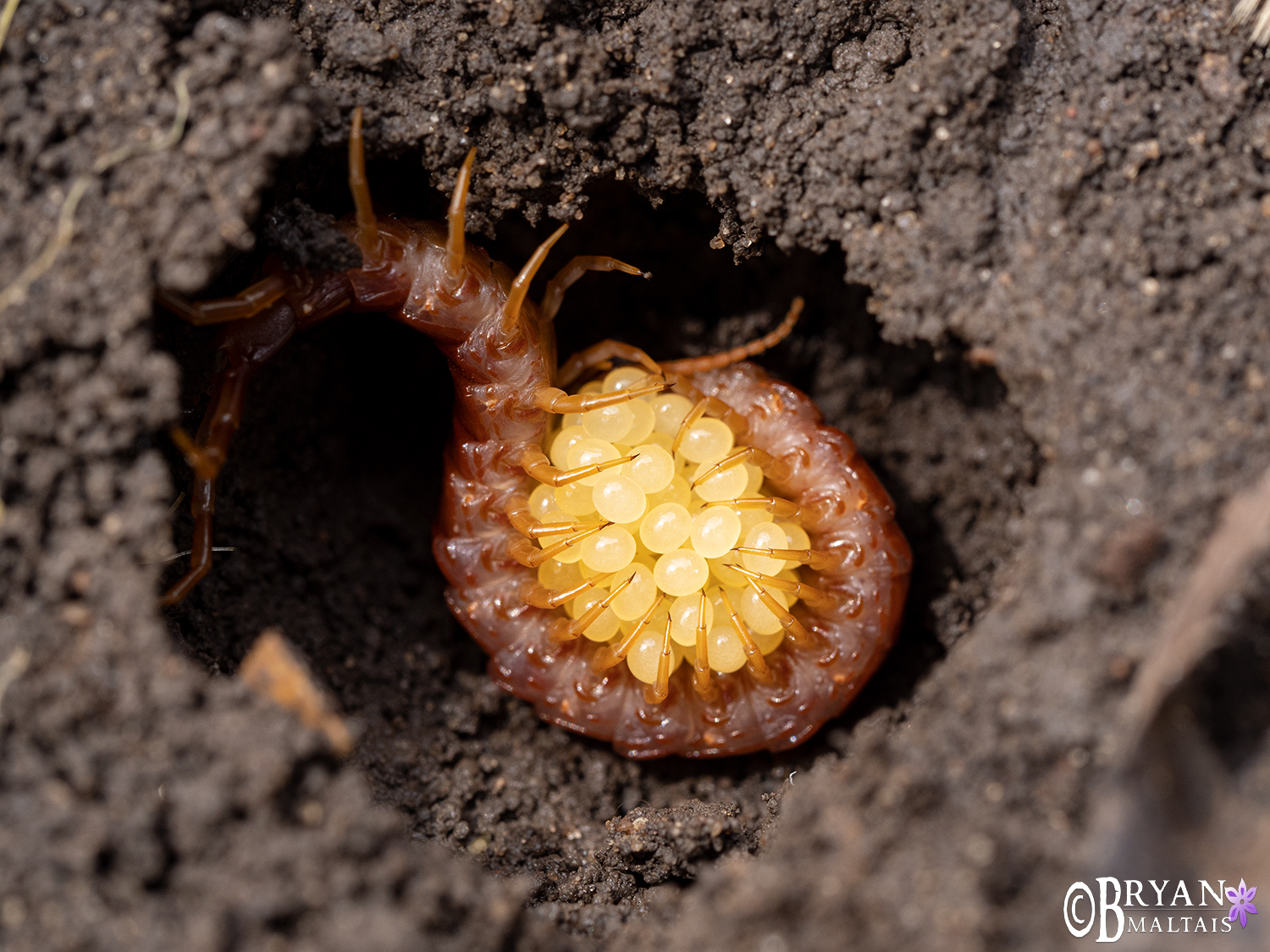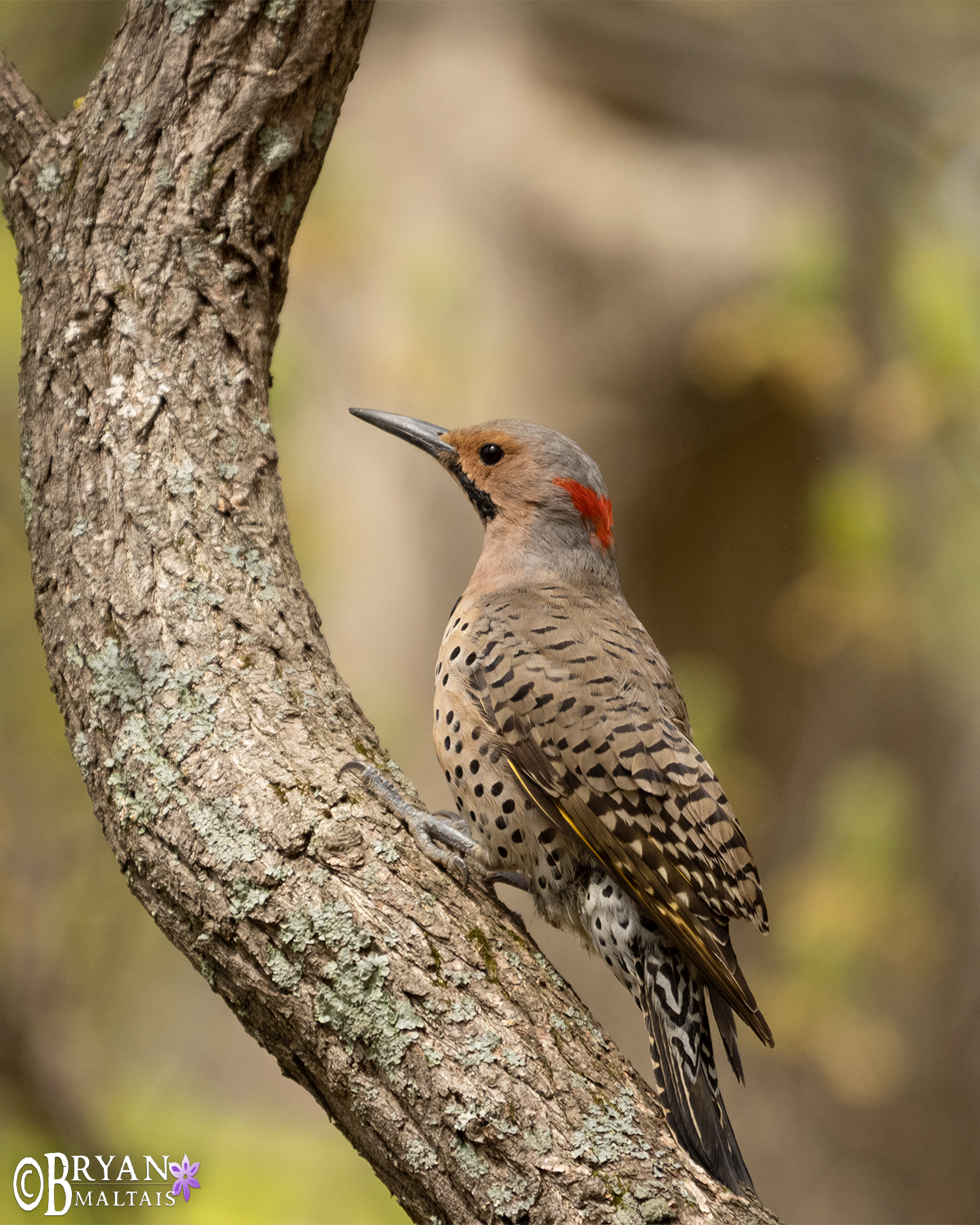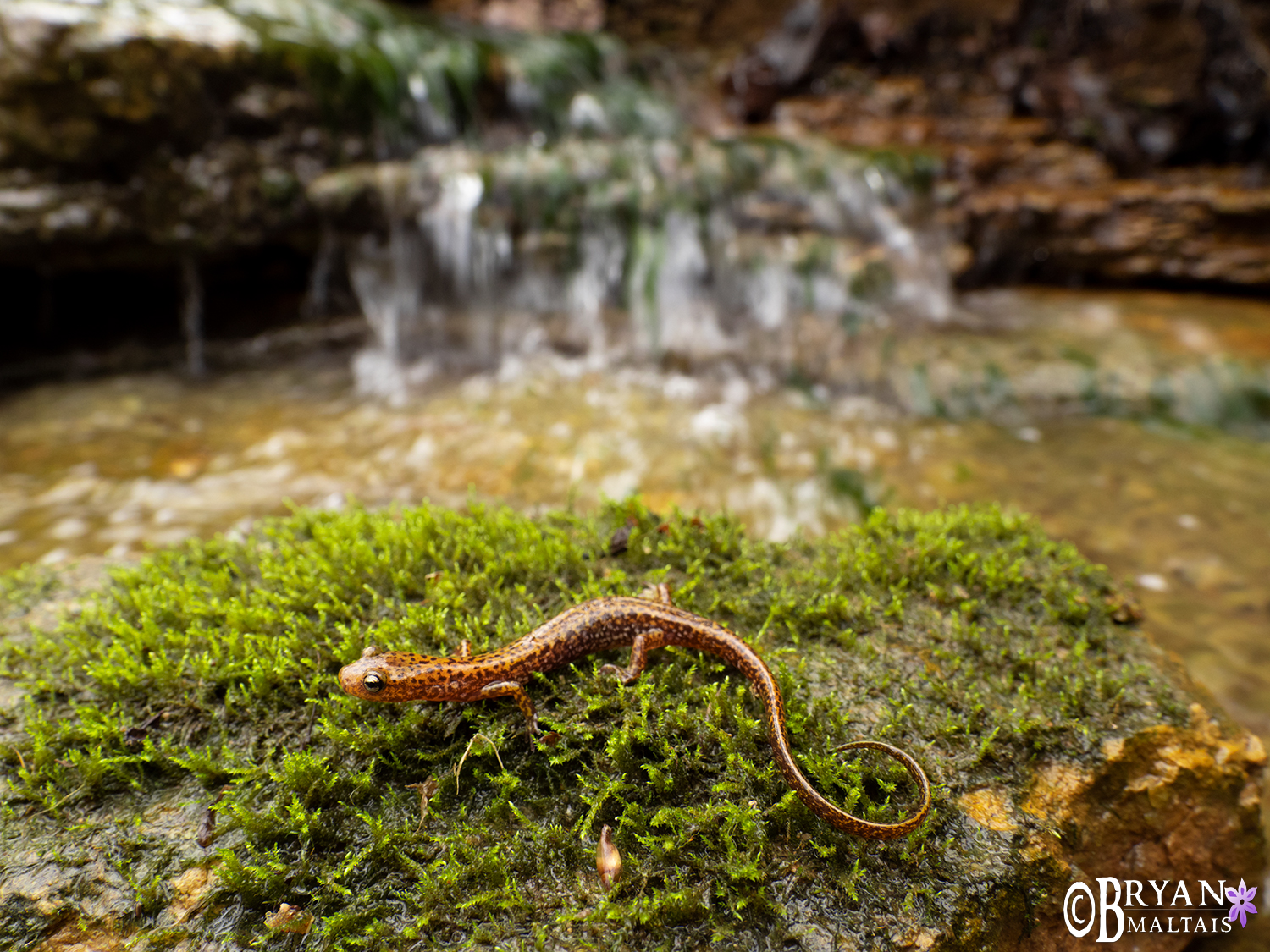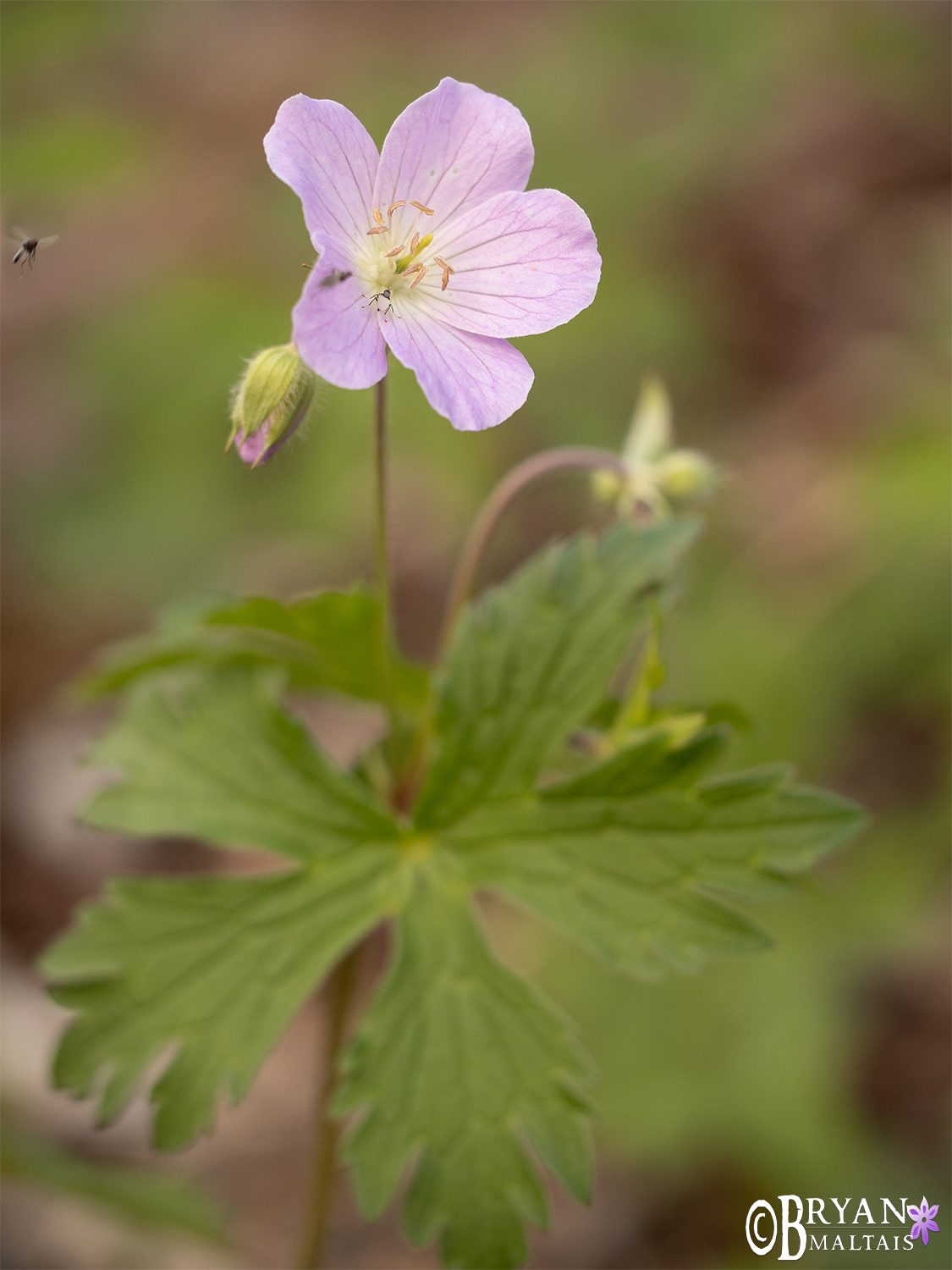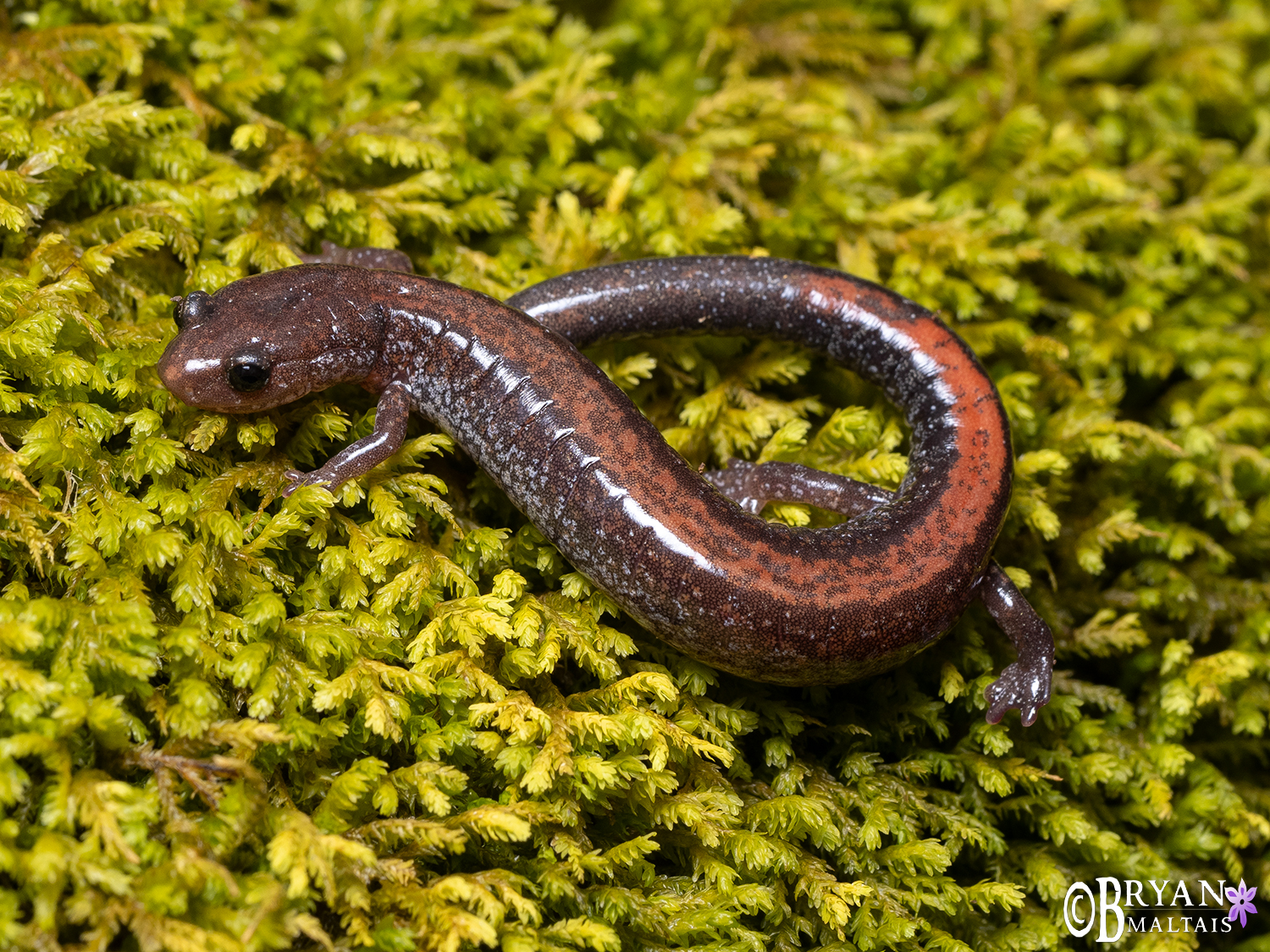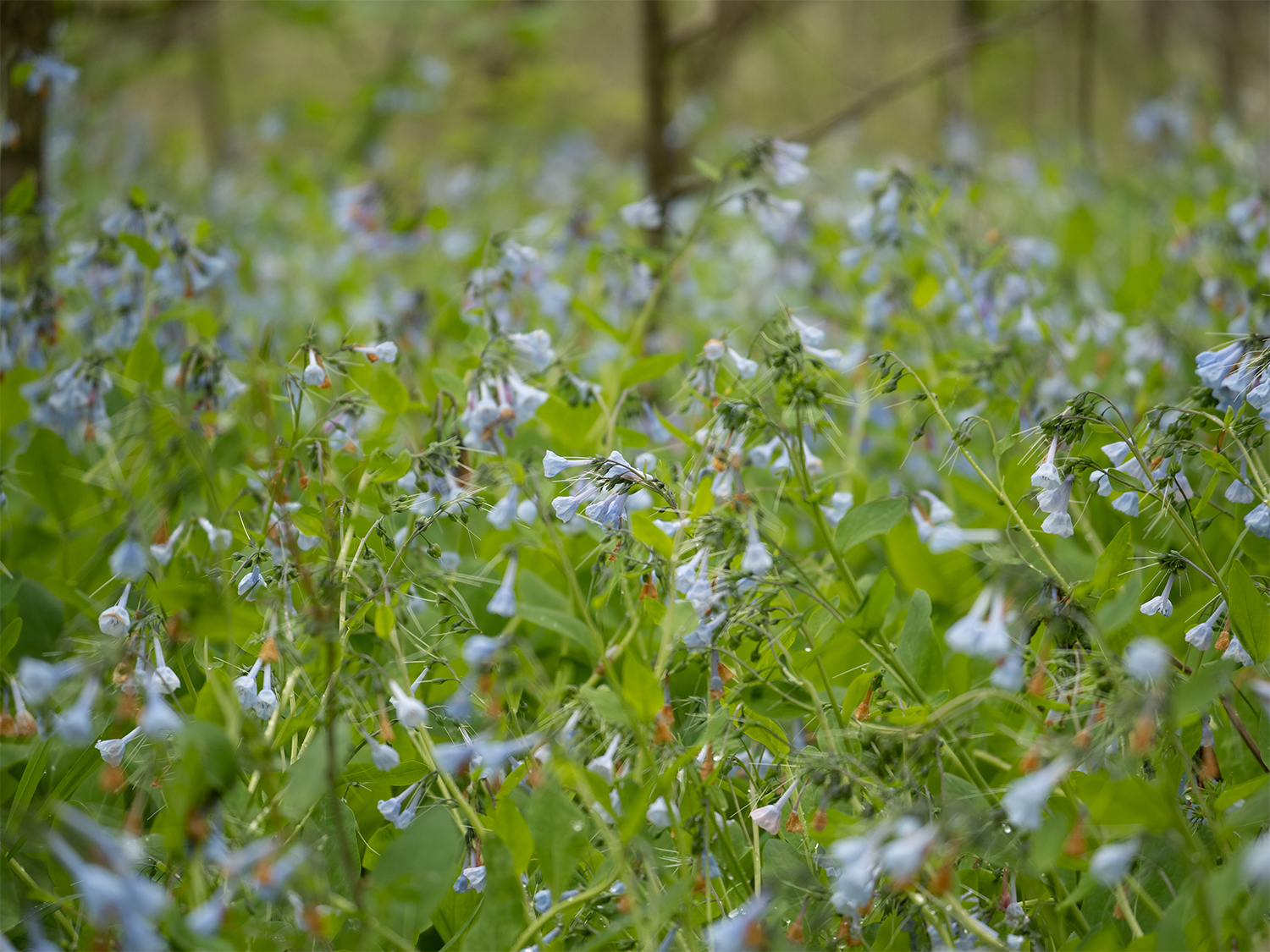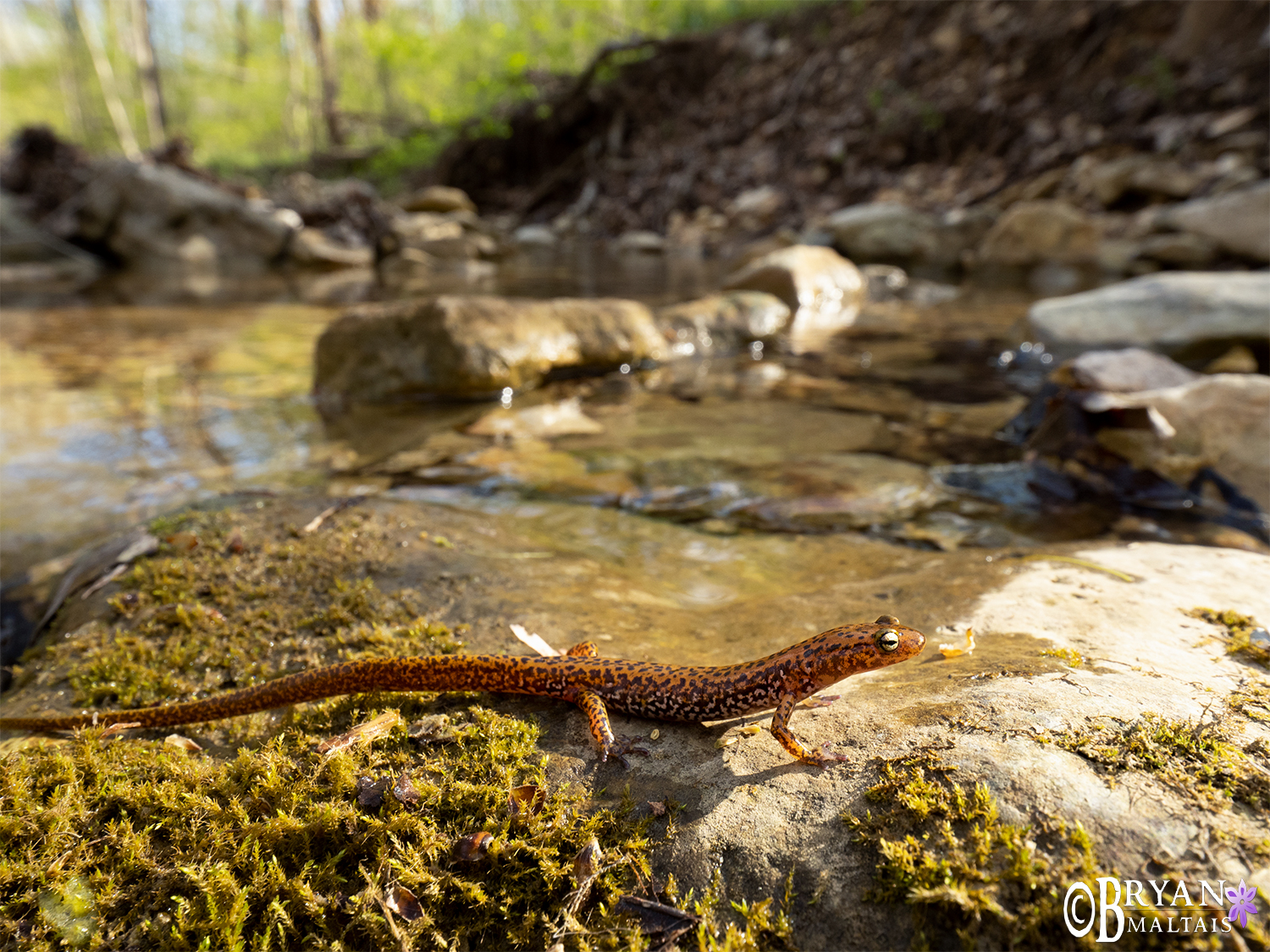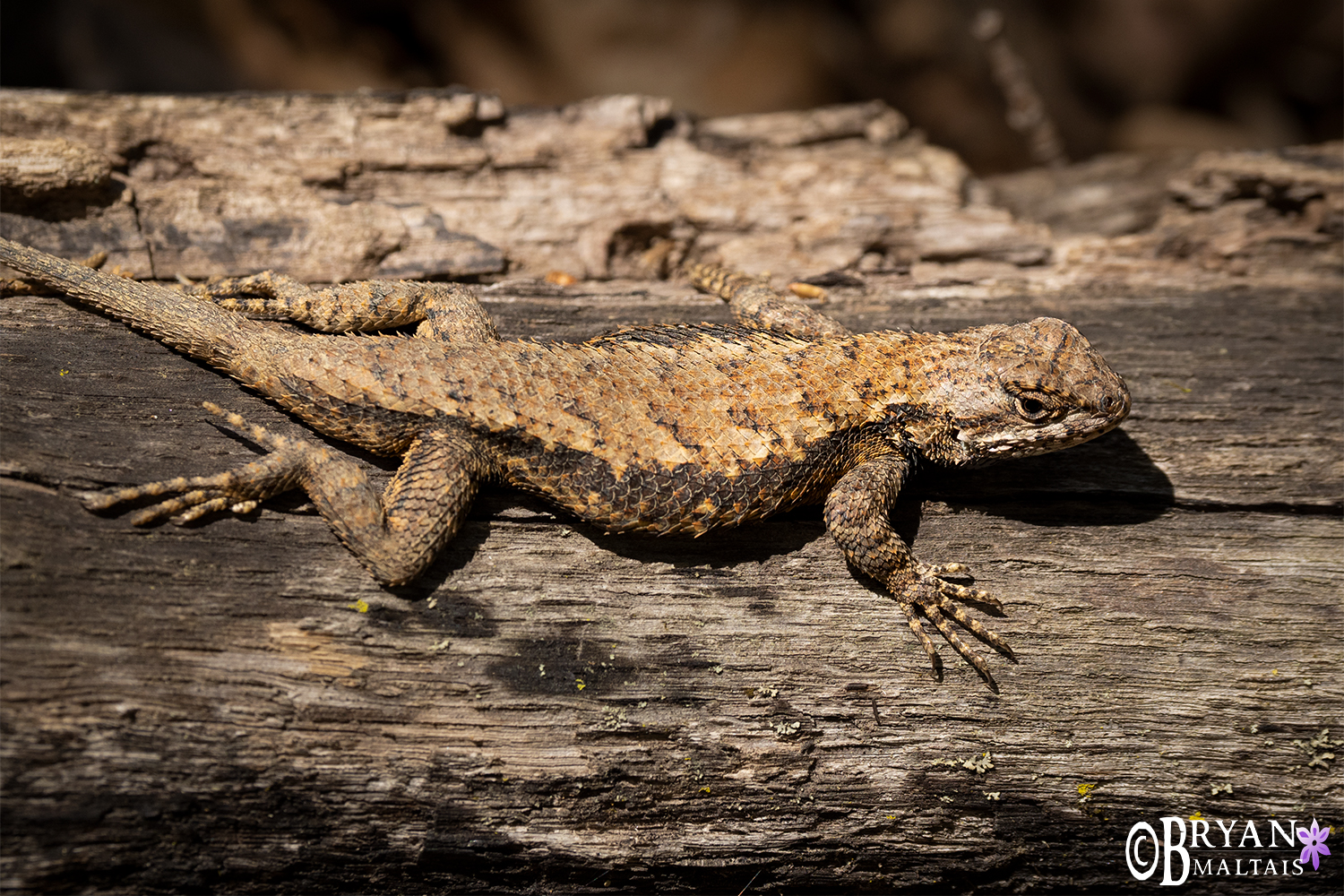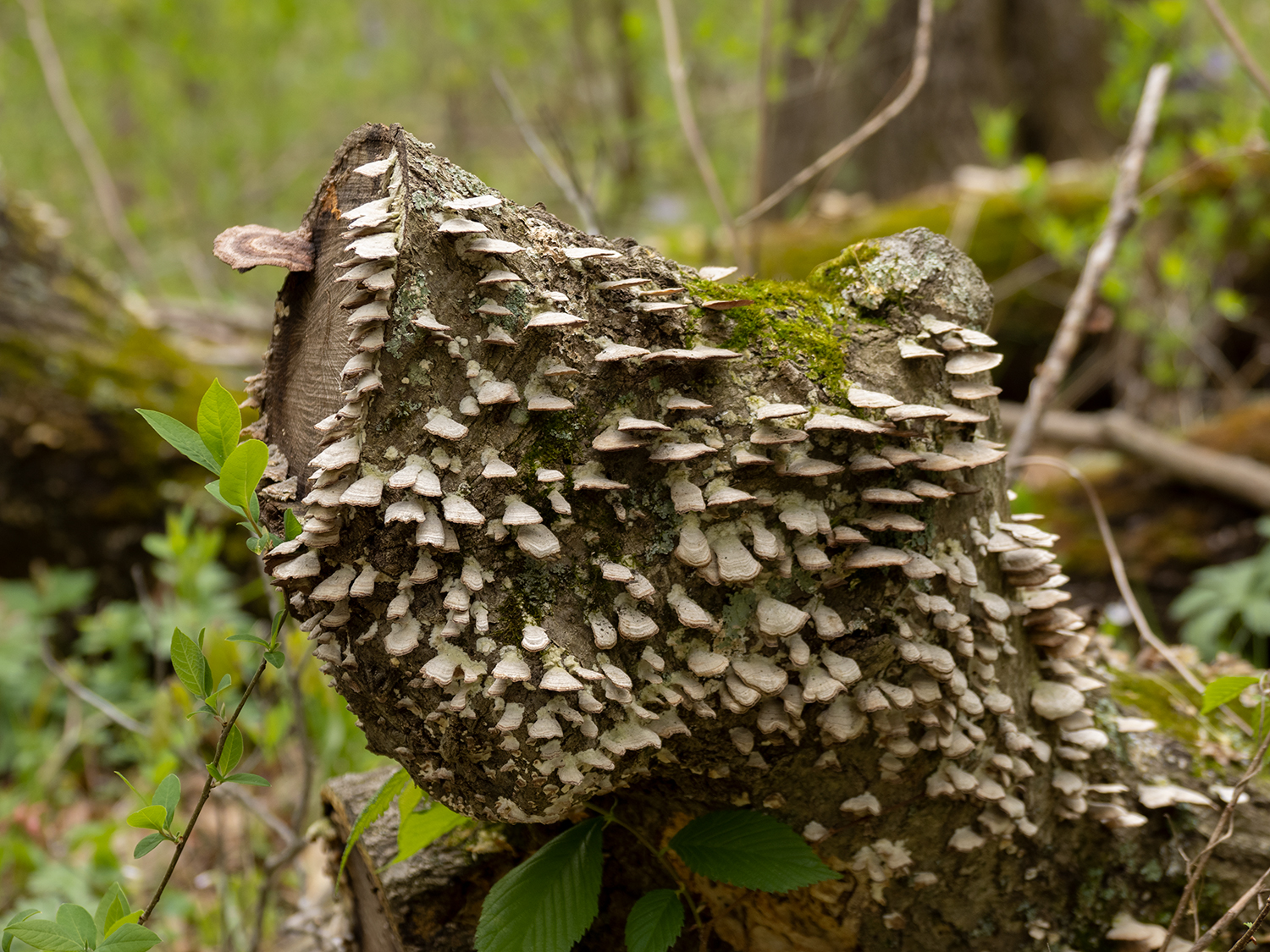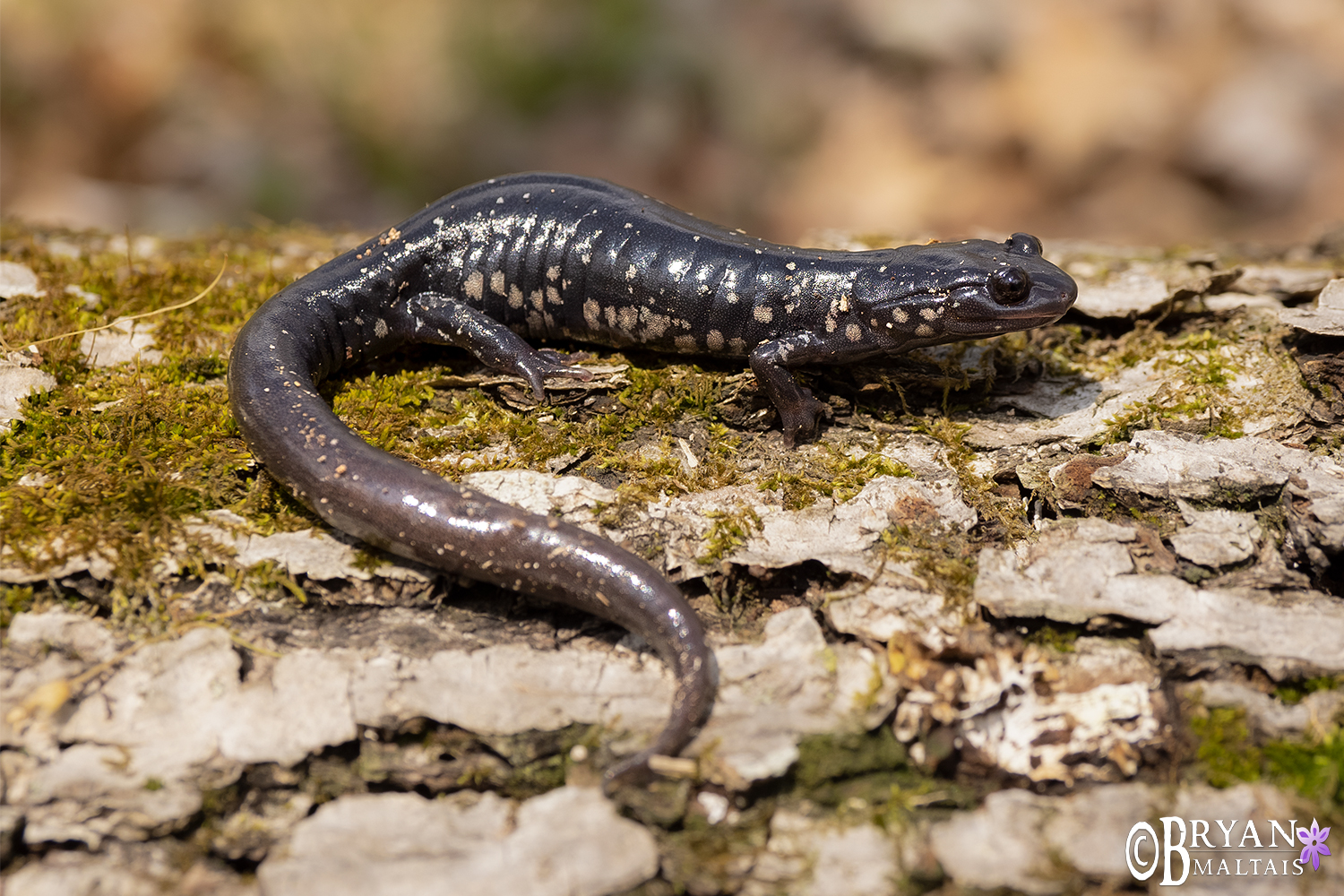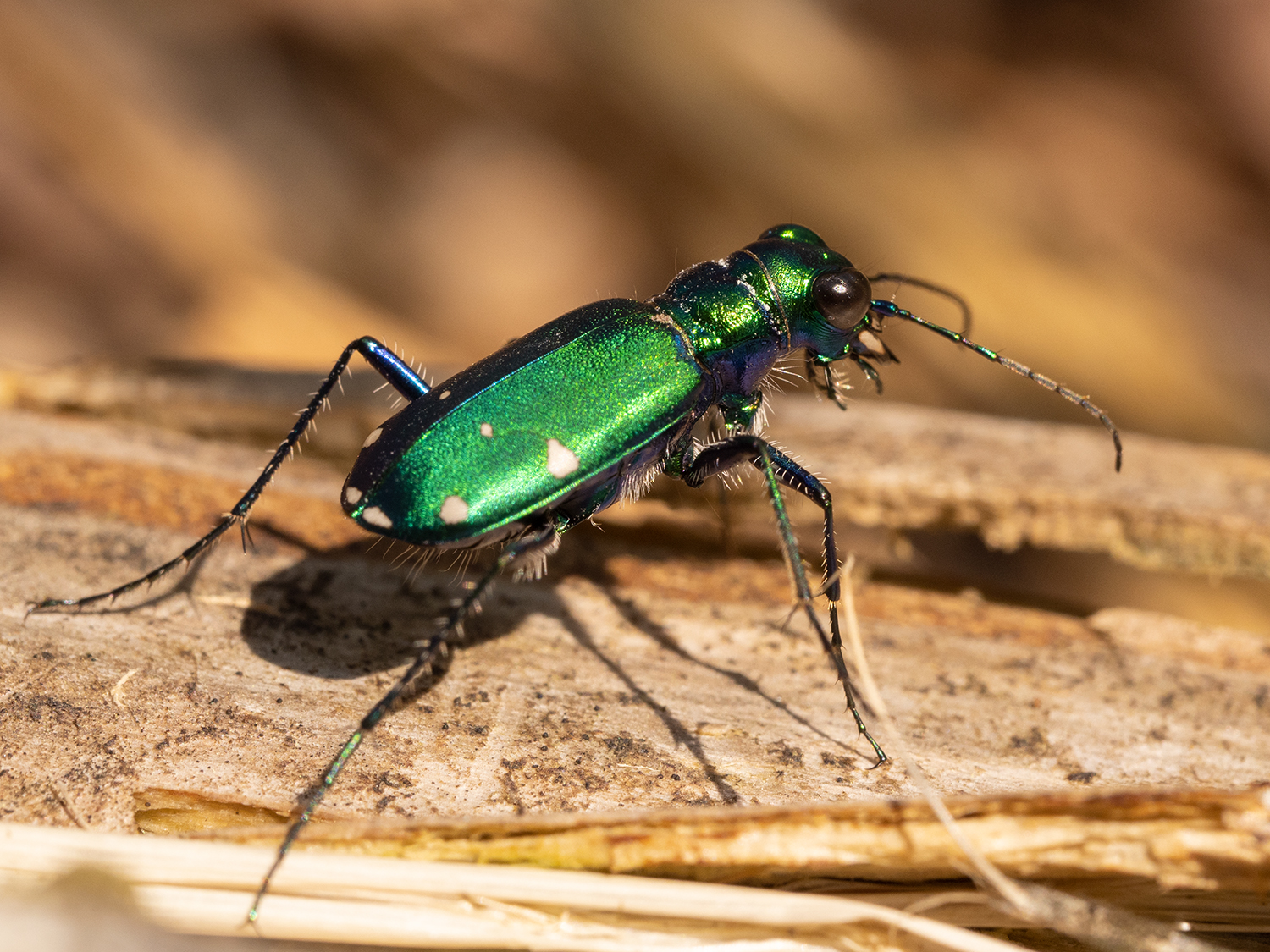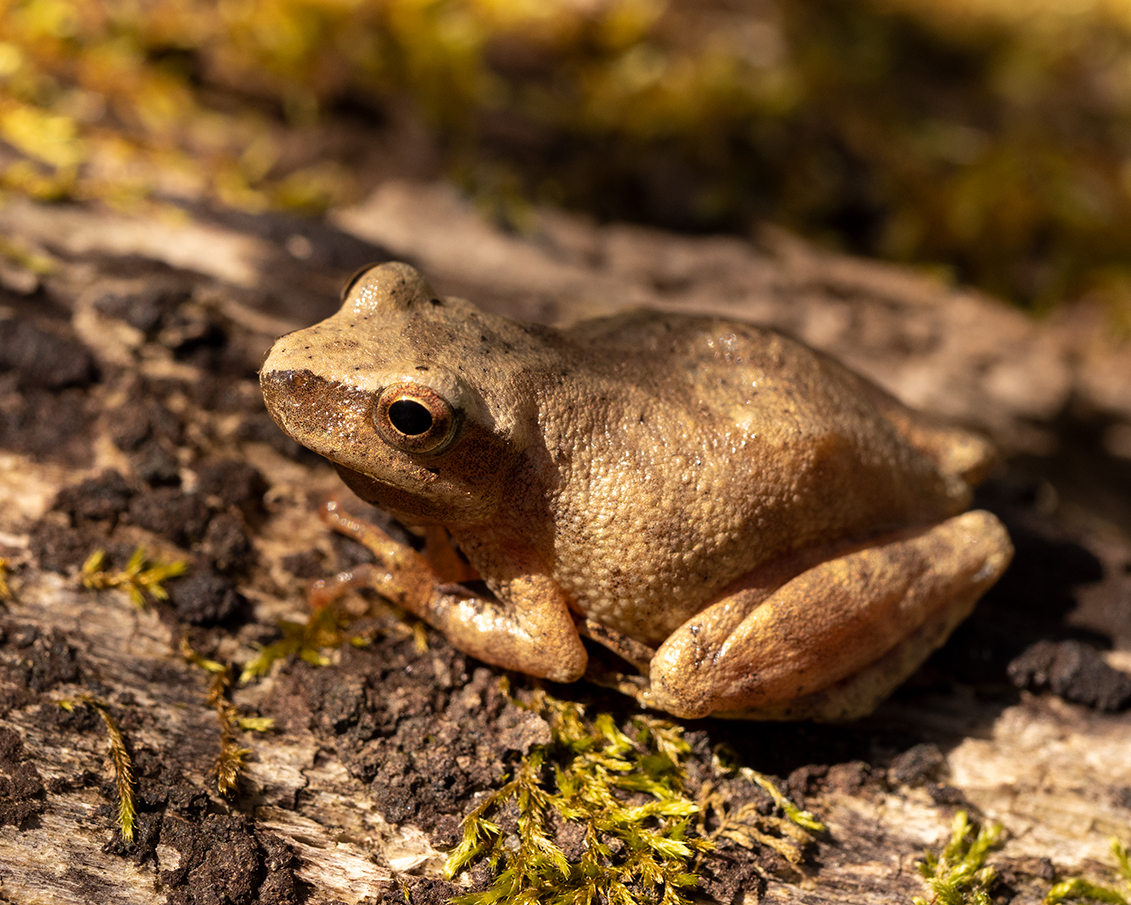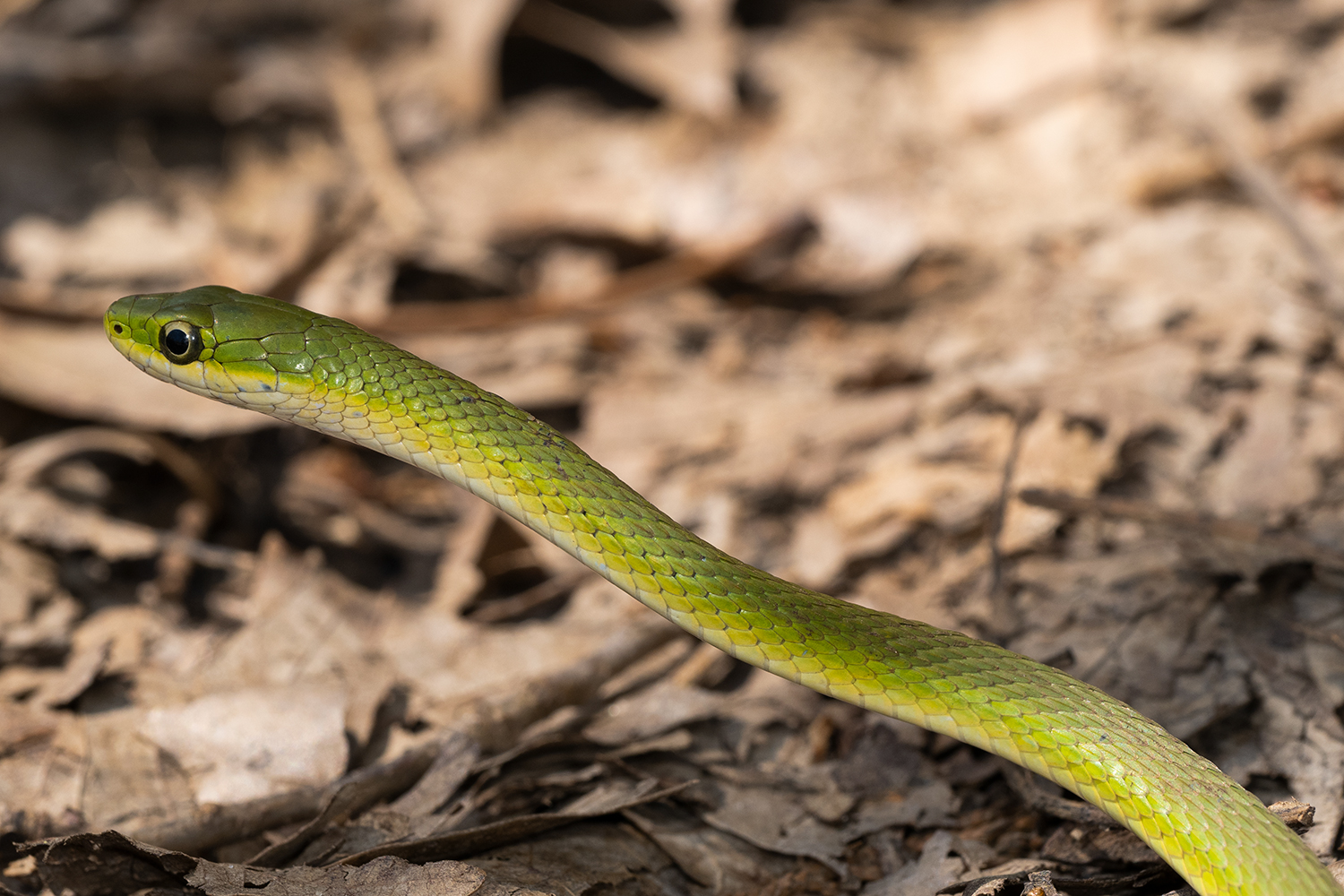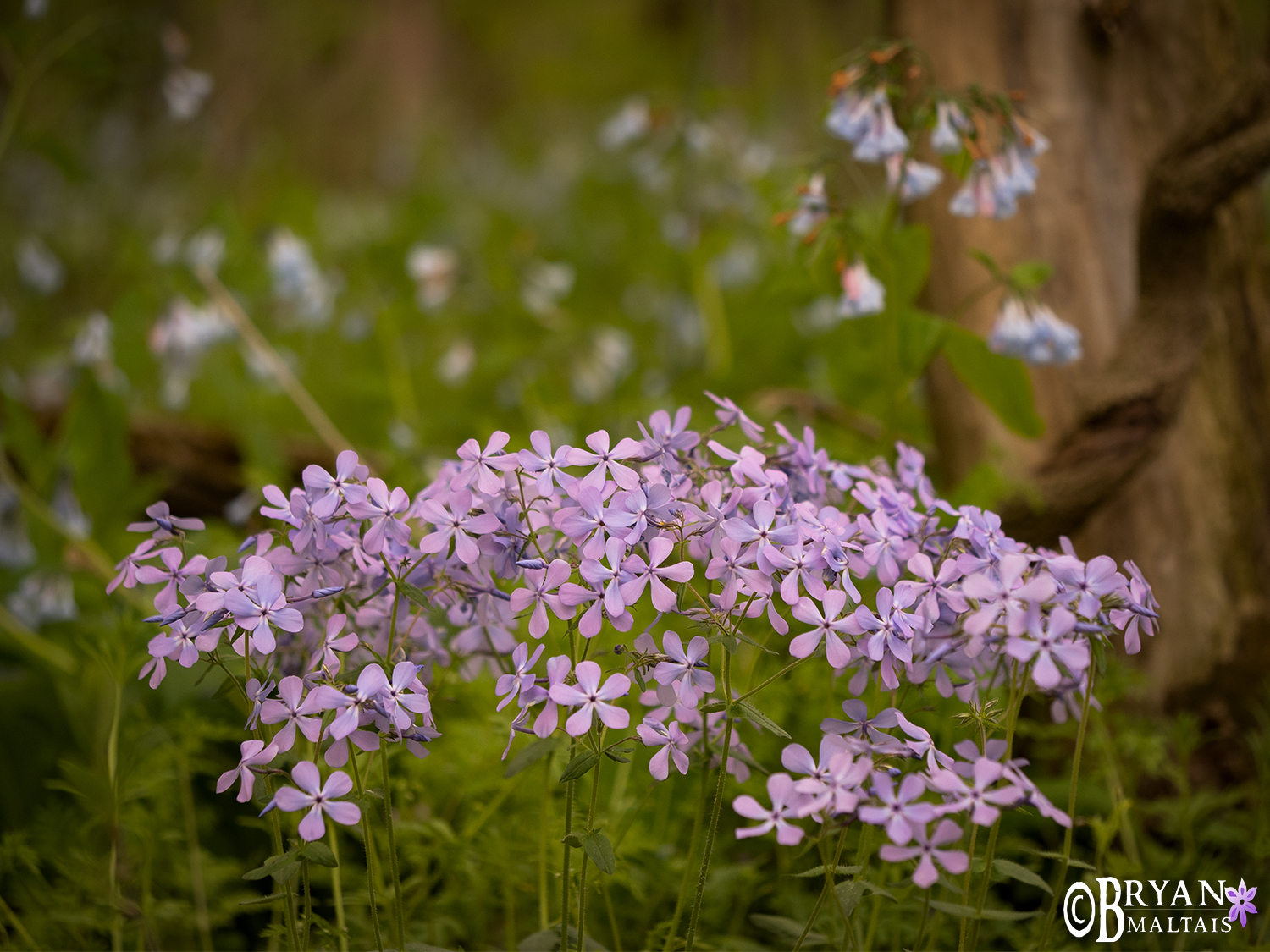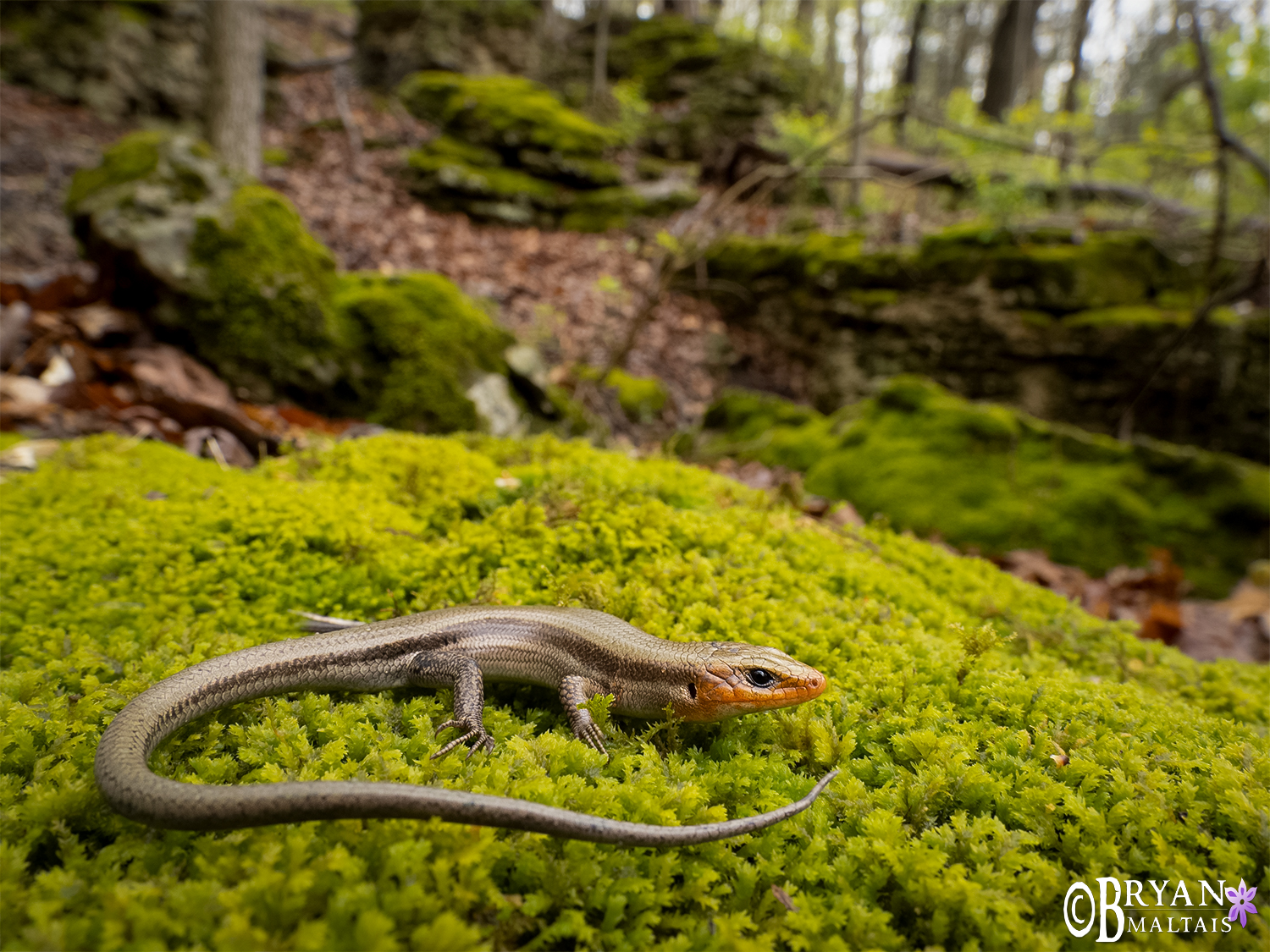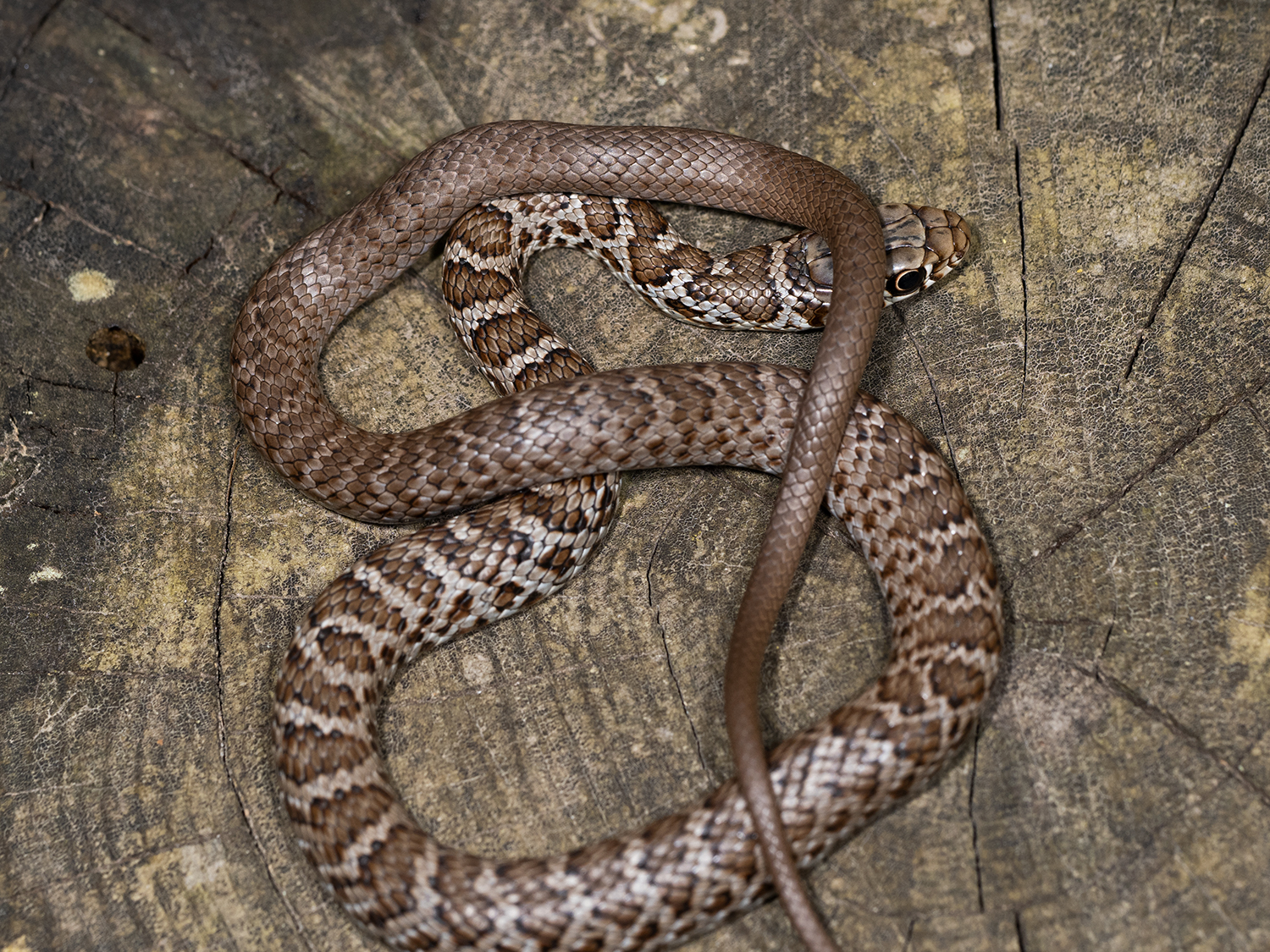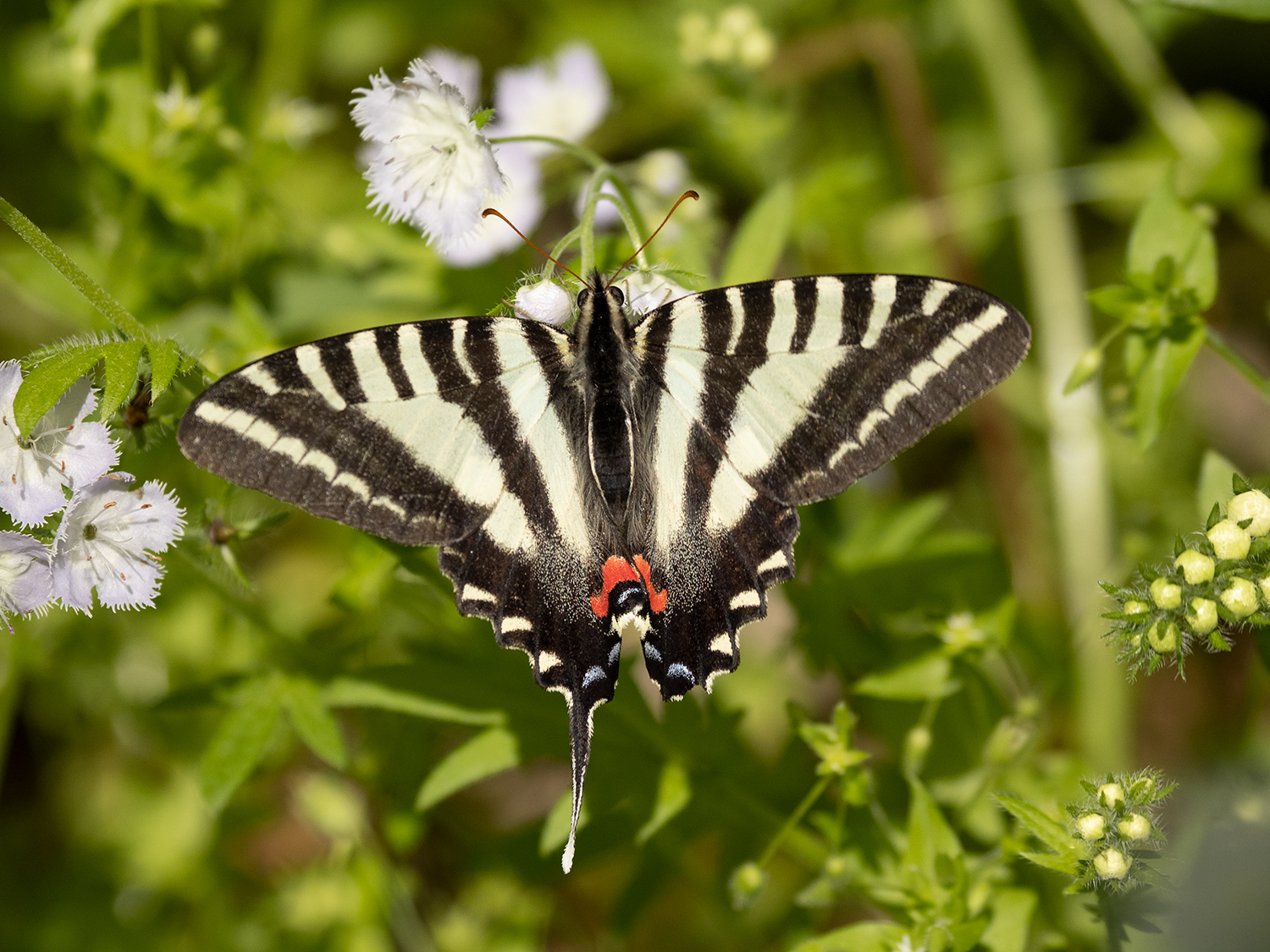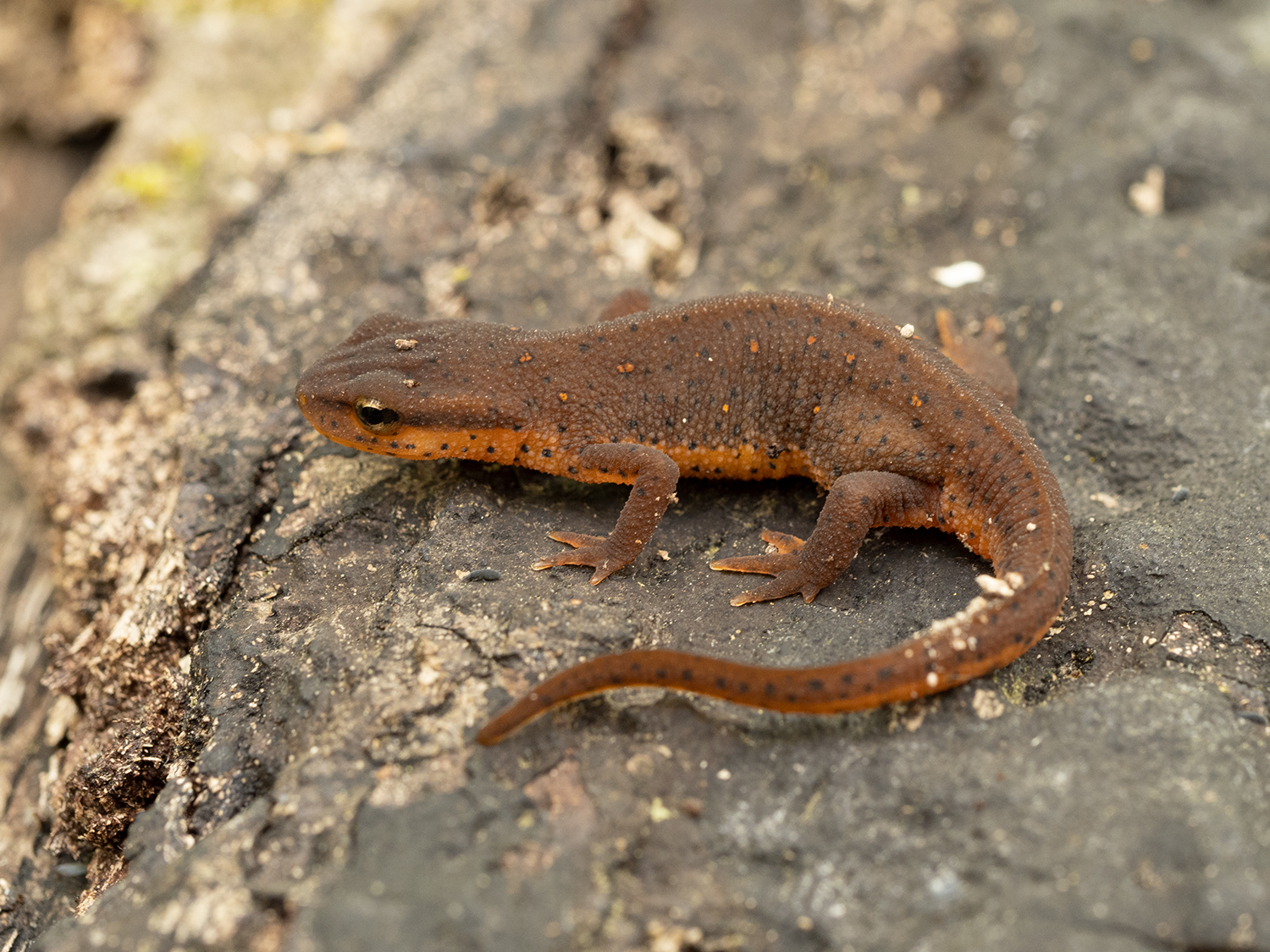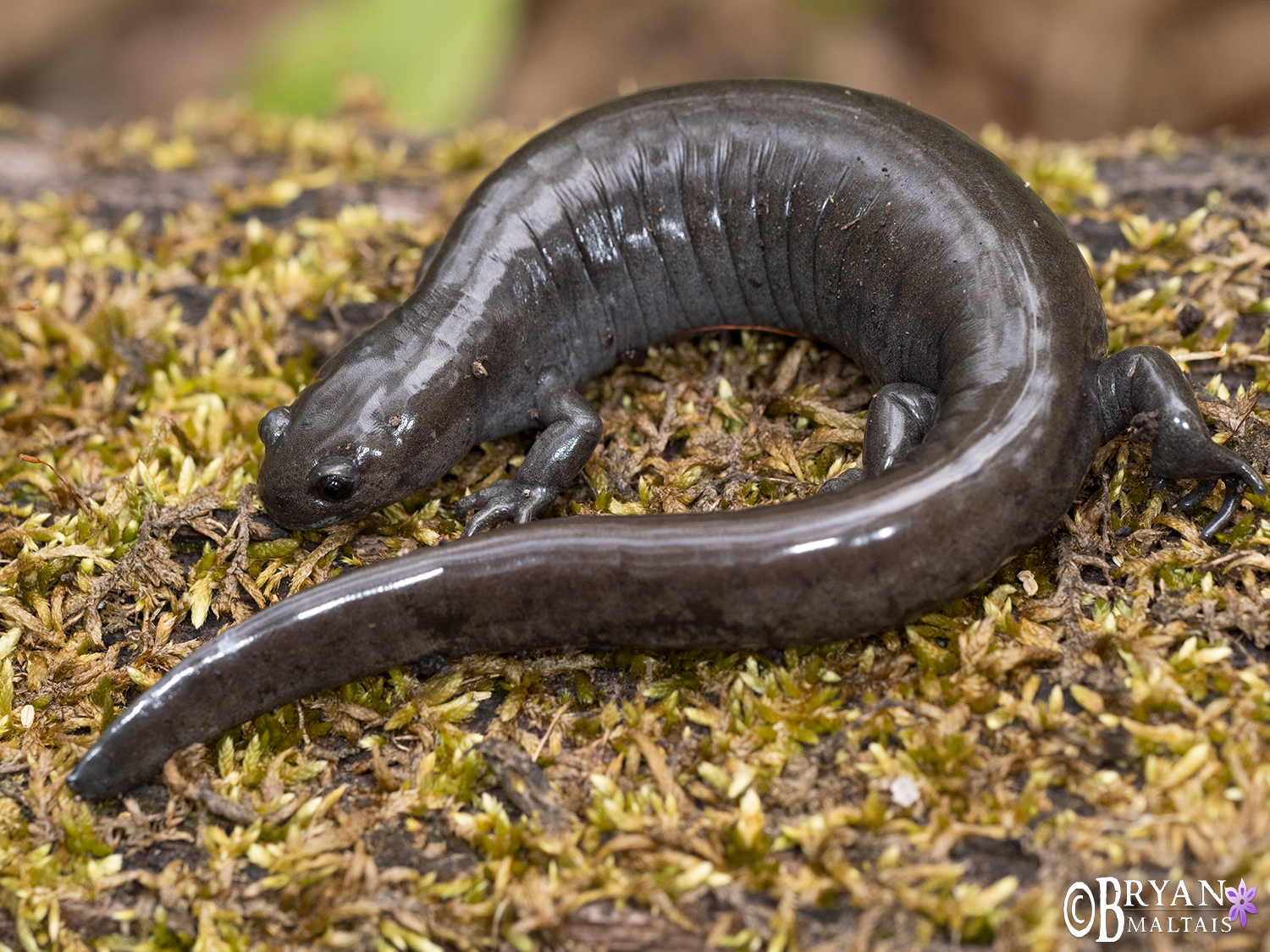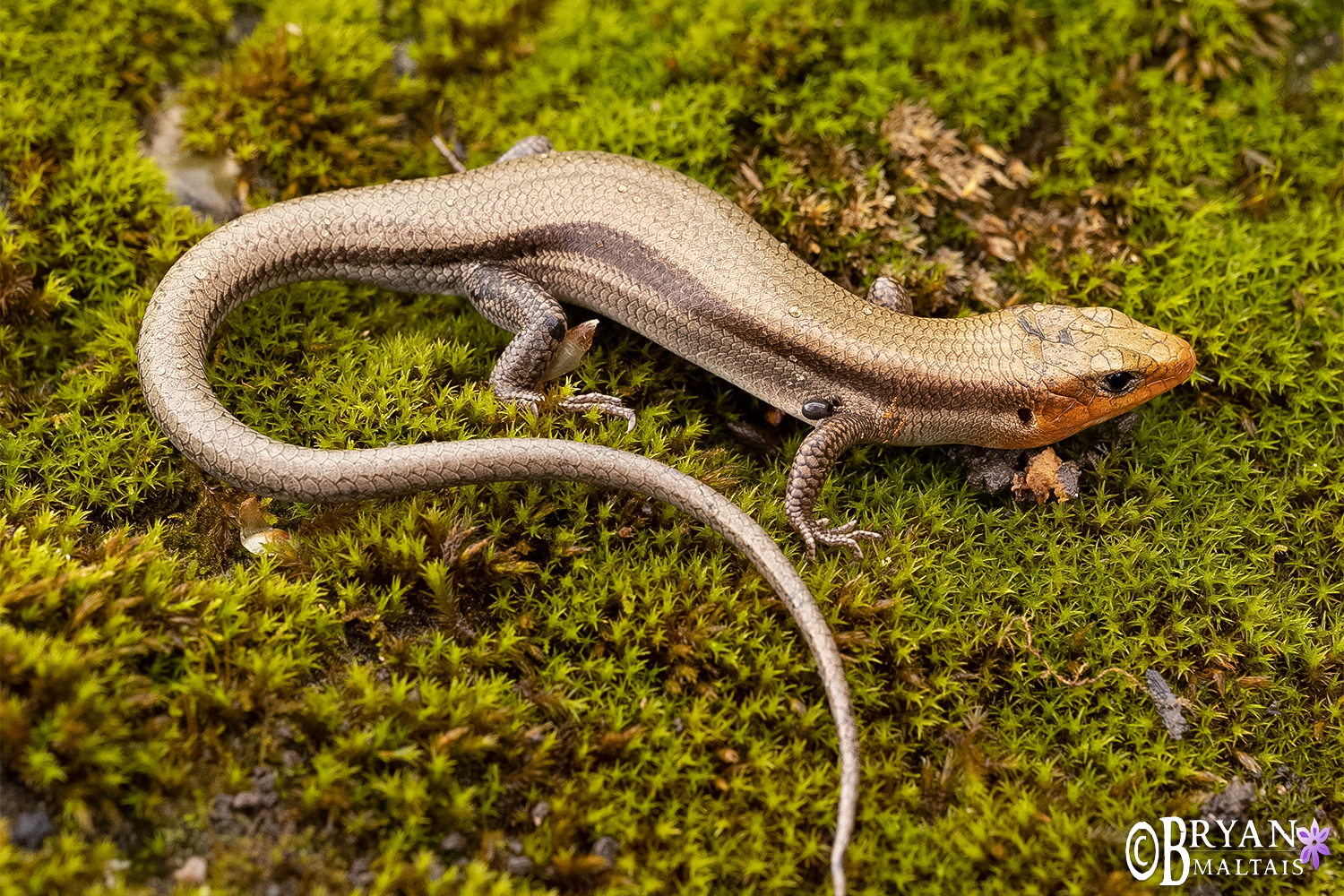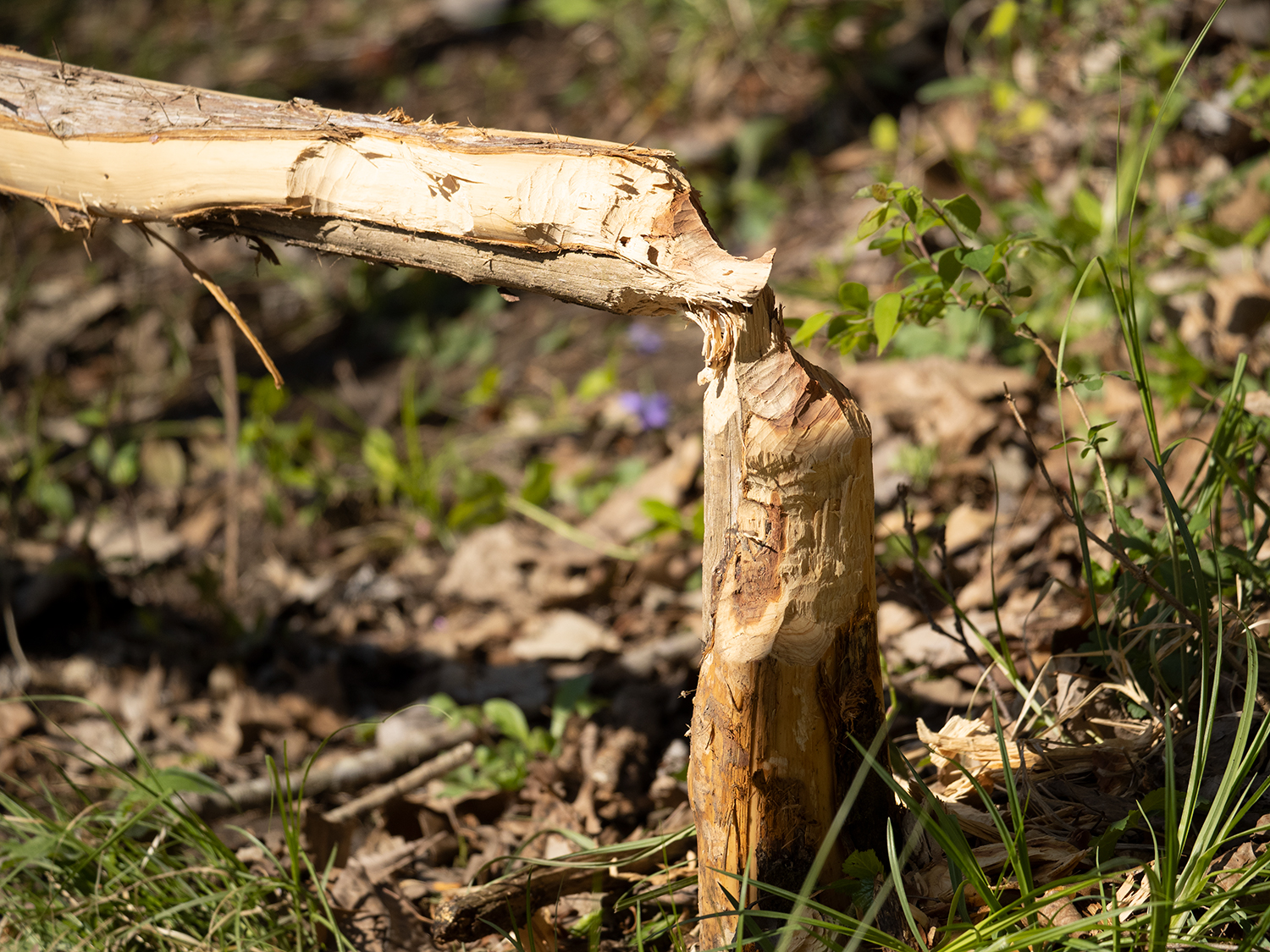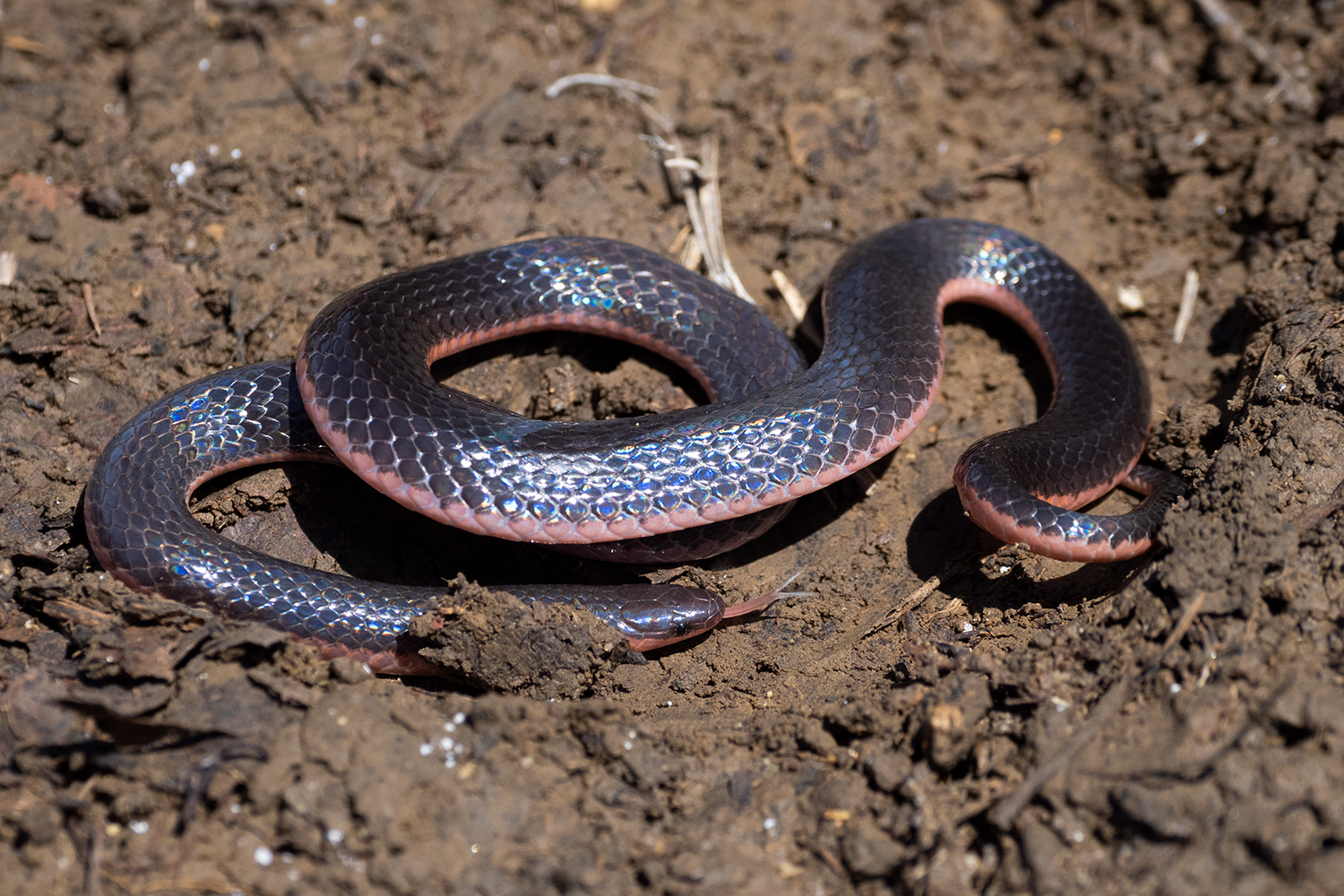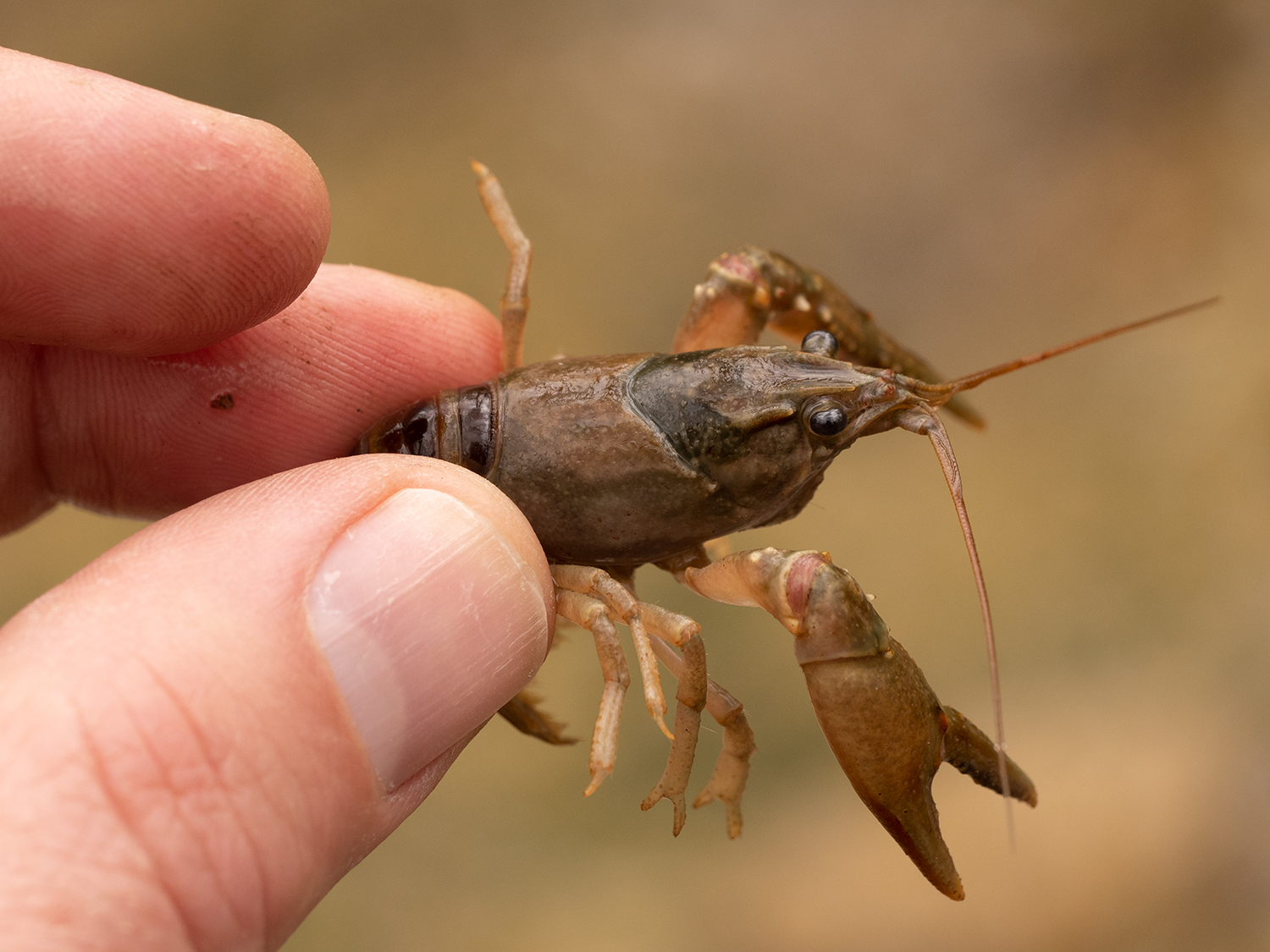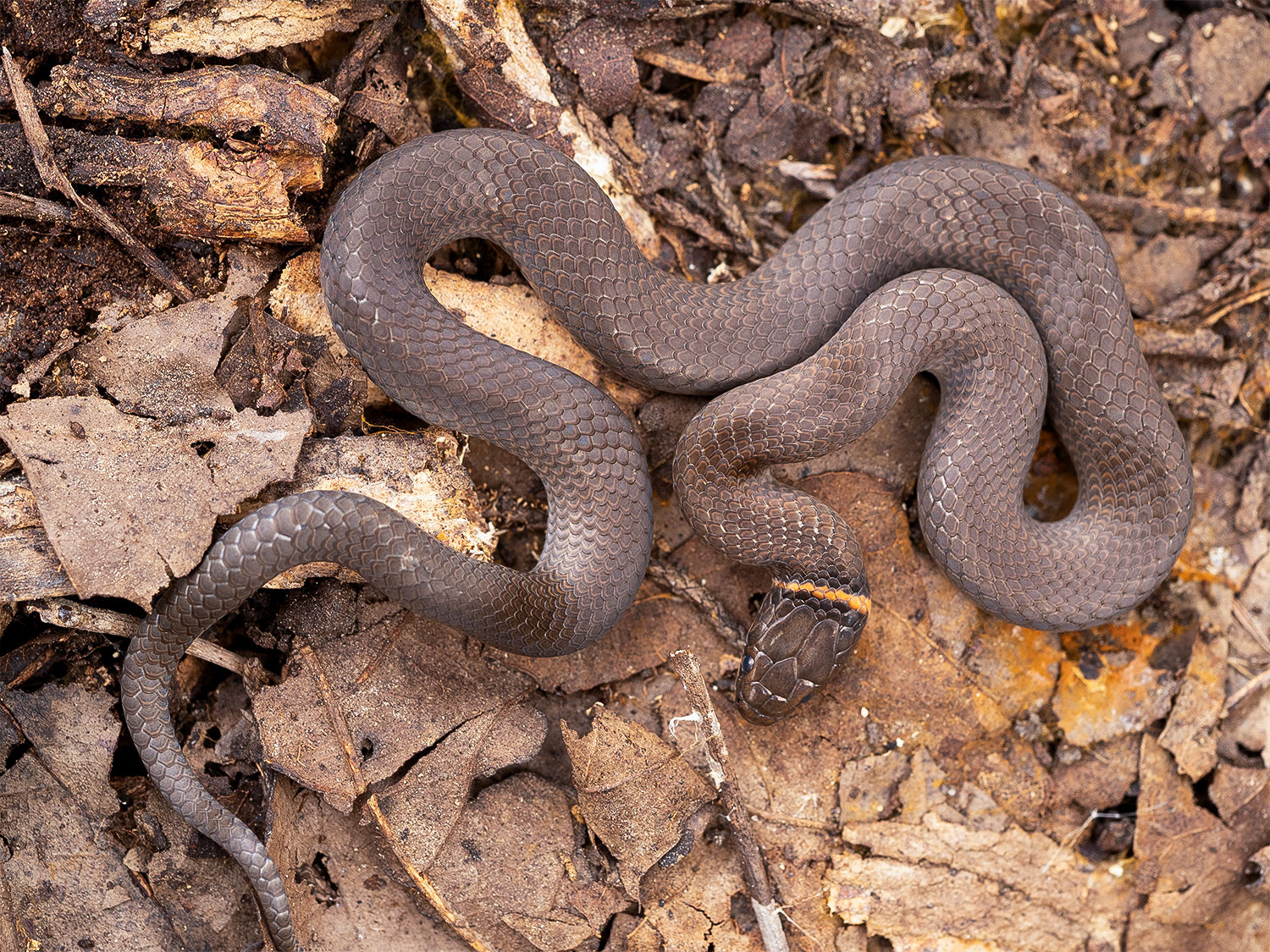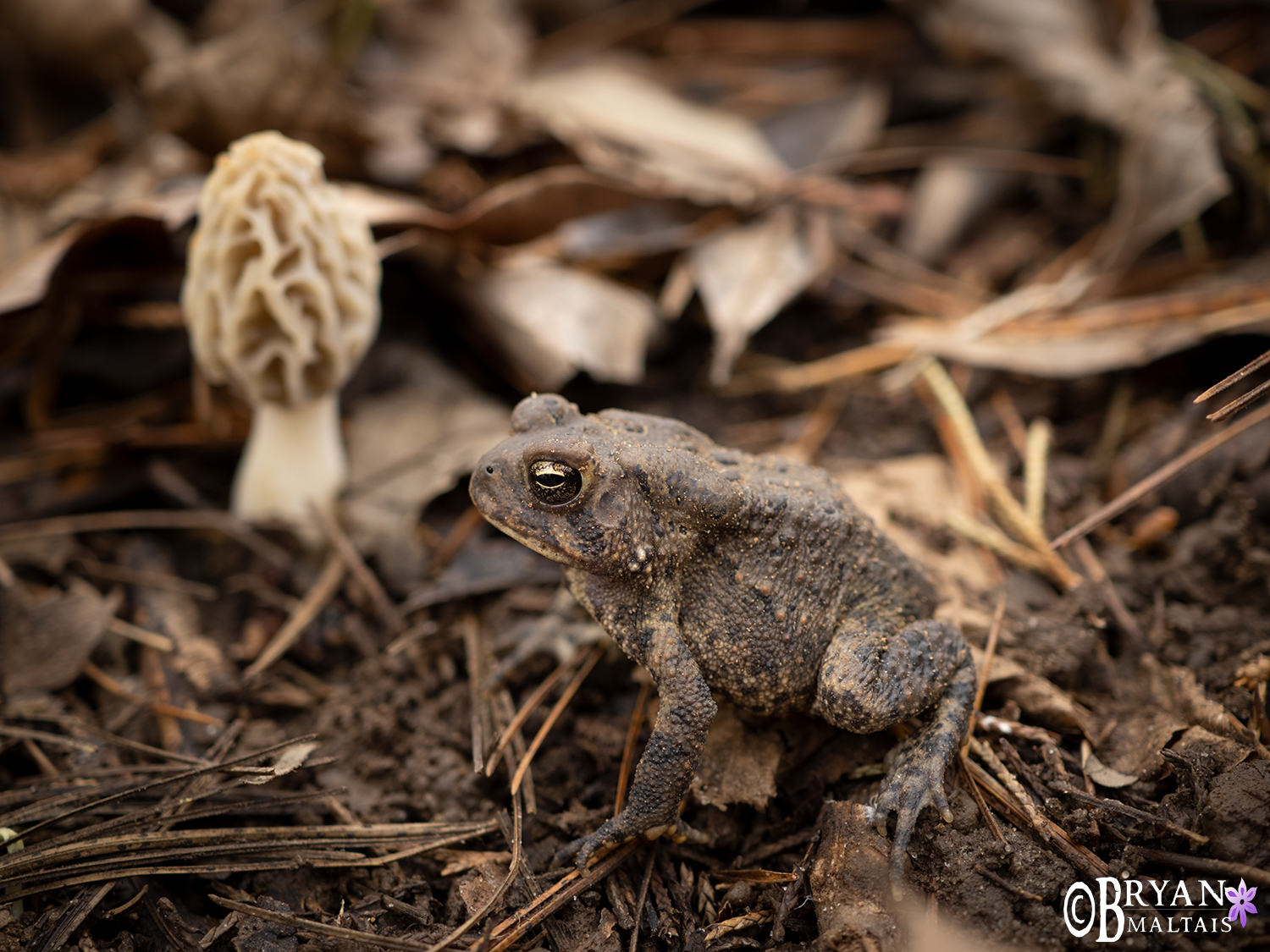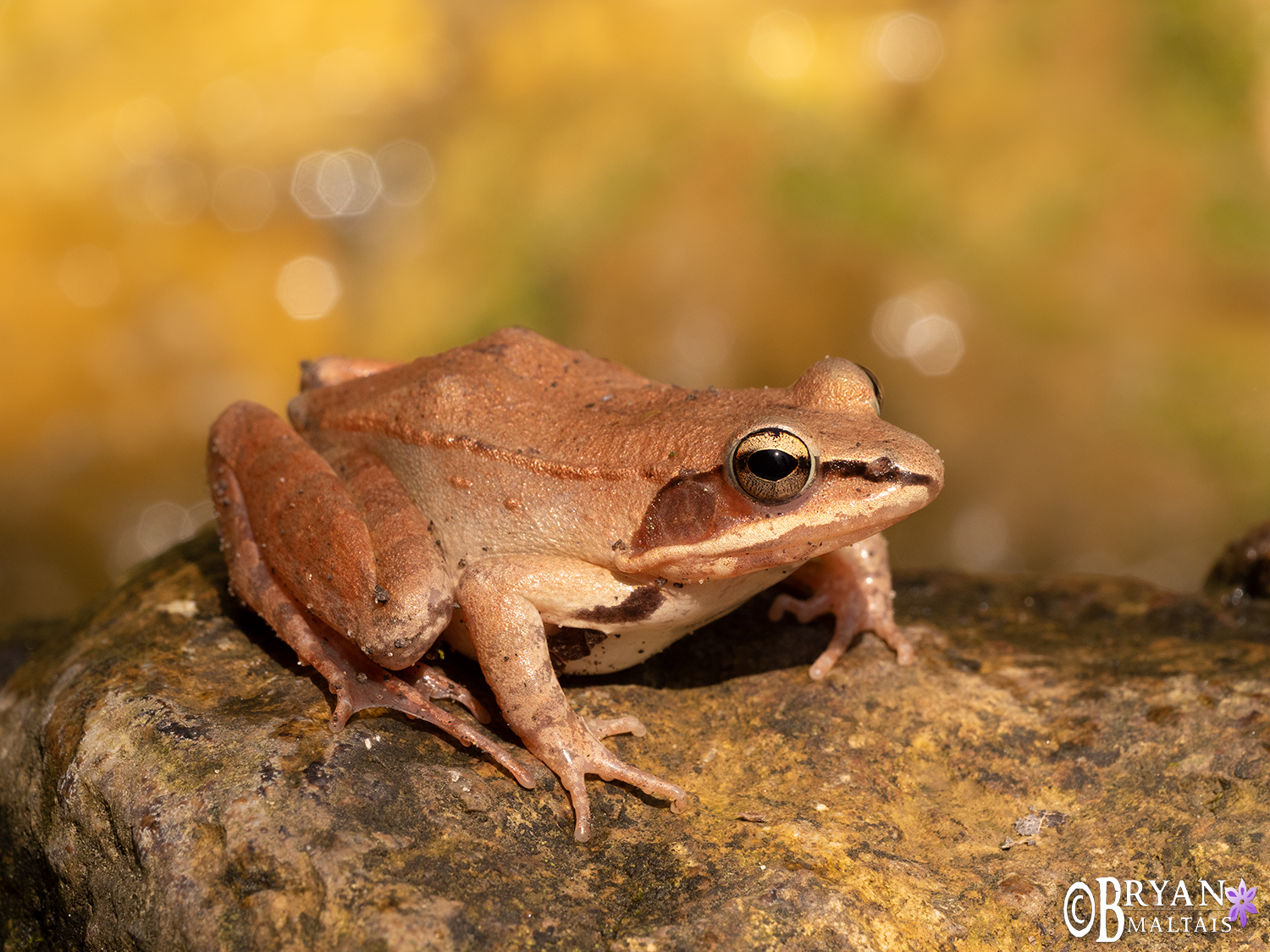
Every Spring I try to return home to Missouri for a welcome dose of the color green, moisture, and rich diversity of animal life. The oak-hickory forests of the upper Ozark Hills tends to scratch those itches nicely. In mid April the forest is bursting with color from the newly unfurling lime-green leaves, Dogwood and Redbud trees in bloom, and the ephemeral layer of wildflowers on the forest floor. I enjoy wandering beside the frequent limestone streams that sheathe off to create shelves that the water trickles down. There are countless hidden types of life to discover living both in the water and along the stream sides. The forest itself is an Eden of life with many interesting creatures to find. I often only cover a short distance after an entire day spent exploring. But of course it’s the reptiles and amphibians that interest me the most.
This is the camera system that I use for macro photography
- This lovely girl is a Wood Frog. It has one of the widest ranges of any frog, from Georgia to northern Alaska, though considered “vulnerable” and not particularly common in Missouri.
- A Dark-sided Salamander (subspecies of the Long-tailed Salamander) in it’s natural habitat.
- In early Spring lush wildflowers are able to carpet the forest floor as if in an open meadow because the trees’ leaves haven’t yet unfurled, which allows full sunlight to reach the ground.
- Red-bellied Snake
- April 2021 in Missouri was unseasonably, though pleasantly cool. It even dropped to freezing and snowed on Apr 20th. This made it hard to find reptiles in the days following, but made the ones that were out easier to photograph because they were slow moving like this Five-lined Skink.
- Phlox
- Red Columbine, which is used as an indicator of wetlands.
- An unhappy looking Virginia Opossum. Their first step in dissuading attackers is to brandish their teeth, followed by acting threatening, and finally, playing dead.
- Southern Leopard Frog
- A tan morph Southern Leopard Frog
- The Western Ribbon Snake is typically found around wetlands and is a hunter of amphibians.
- Dark-sided Salamanders are part of a genus called “streamside salamanders”.
- Jack-in-the-Pulpit
- Most colubrid snakes musk when caught, but this large Plainbelly Watersnake takes the record for smelliest snake that I’ve ever encountered.
- The Green Frog is very common both hiding under rocks and along the banks of small Ozark streams.
- This Marbled Salamander was my most treasured find on this trip
- This Juvenile Speckled Kingsnake was bravely fierce, though when it bit my finger repeatedly while taking the pic I couldn’t even feel his tiny fangs.
- I think the Oak-Hickory forest is at its most beautiful in mid-April because the Flowering Dogwoods and Redbud trees make the forest so colorful.
- Eastern Red Centipede mama with eggs
- Northern Flicker
- Dark-sided Salamander
- Wild Geranium
- Southern Redback Salamander
- Bluebells
- A male Eastern Fence Lizard found in Illinois
- Shelf Fungus
- A large Western Slimy Salamander
- The Six-spotted Tiger Beetle is so beautiful that it begs its picture taken, but is notoriously fast and difficult to approach.
- Spring Peeper
- The Rough Green Snake sways in the wind to blend into vegetation. They have extraordinary strength and can wrap thier tail around a branch while rigidly holding the front 2/3 of their horizontally in place.
- Common Five-lined Skinks break their tail off when it’s grabbed by a predator after which it grows back slighlty discolored and smaller. Adult specimens like this one with gloriously long virgin tails are rare.
- Juvenile Eastern Yellow-belly Racer. As a 5 foot adult, this snake will lose its pattern entirely for a solid gunmetal color.
- Zebra Swallowtail
- An Eft of the Central Newt
- The Pilsbury Doughboy of Salamanders…the Smallmouth Salamander
- American Beaver gnaw
- Western Worm Snake
- Virile Crayfish
- Prairie Ringneck Snake
- The Morel of the story is that Toads make people happy

